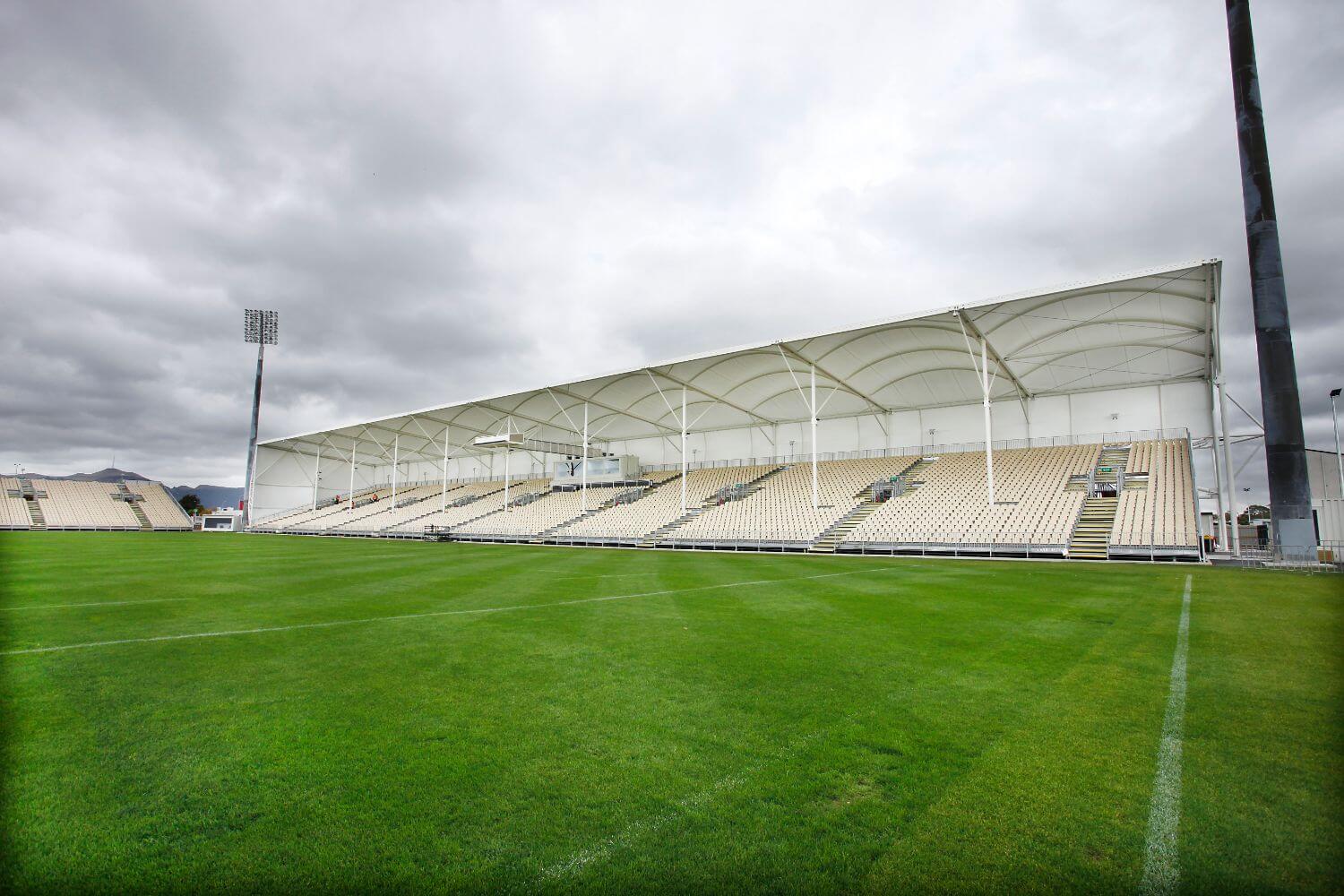
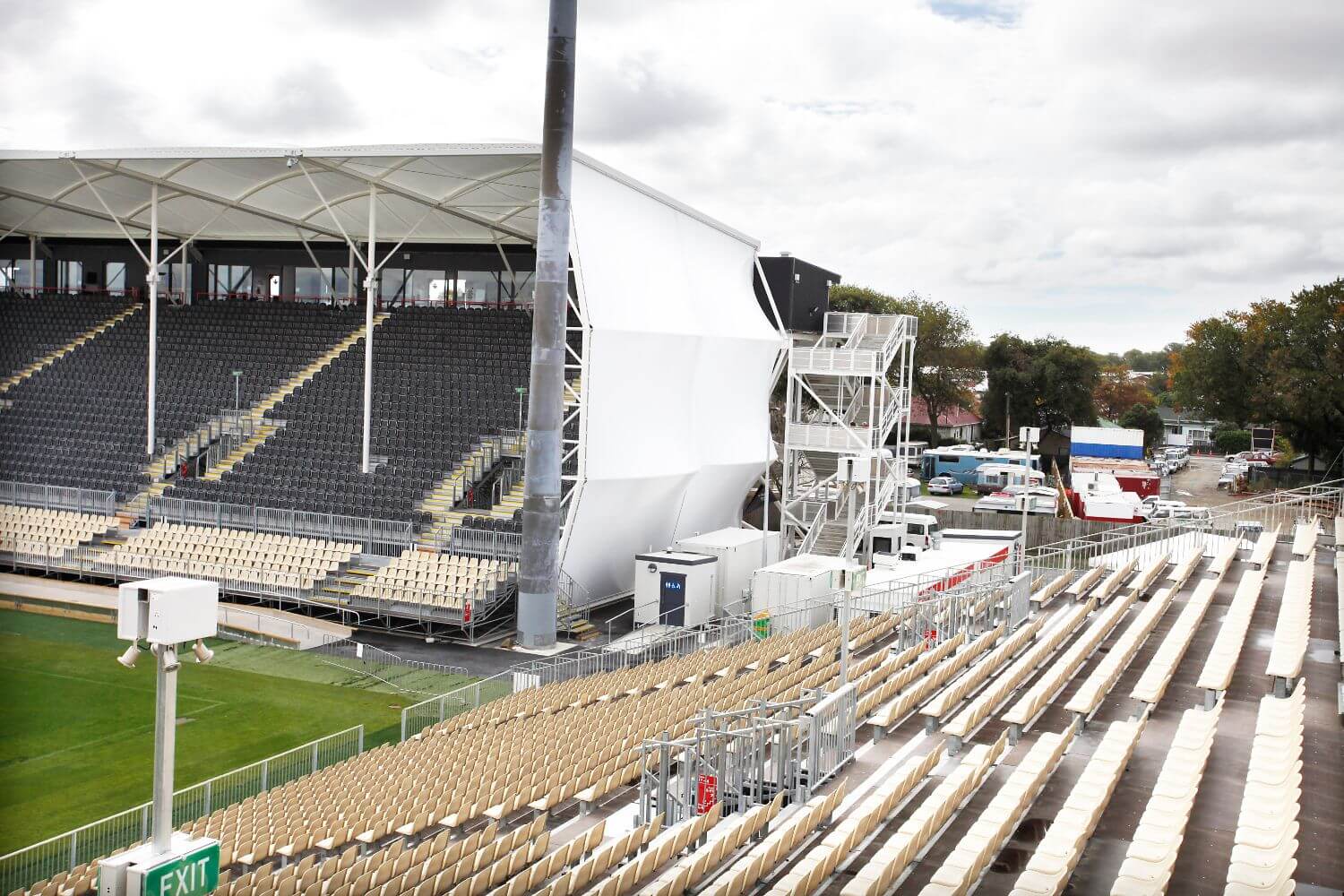
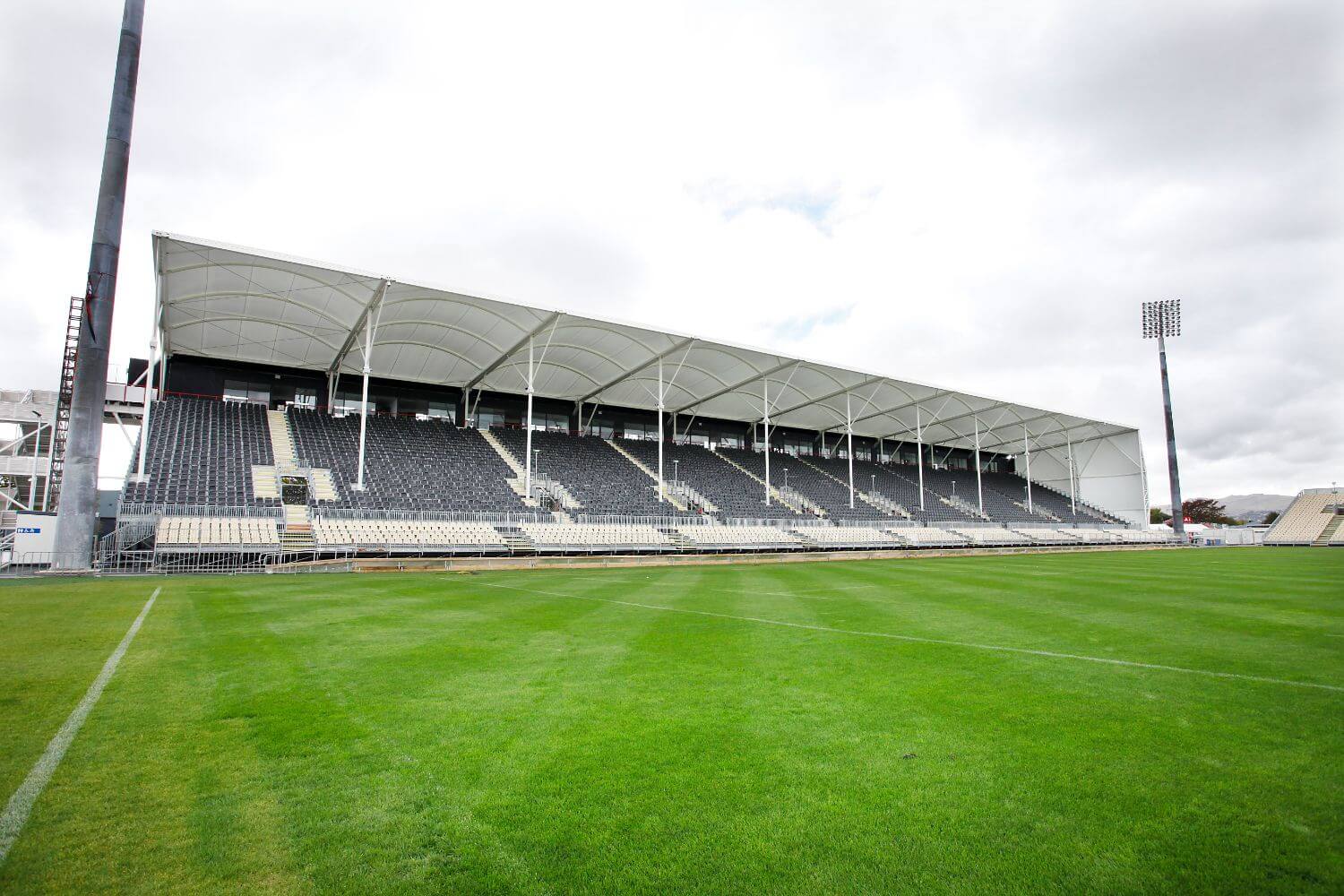
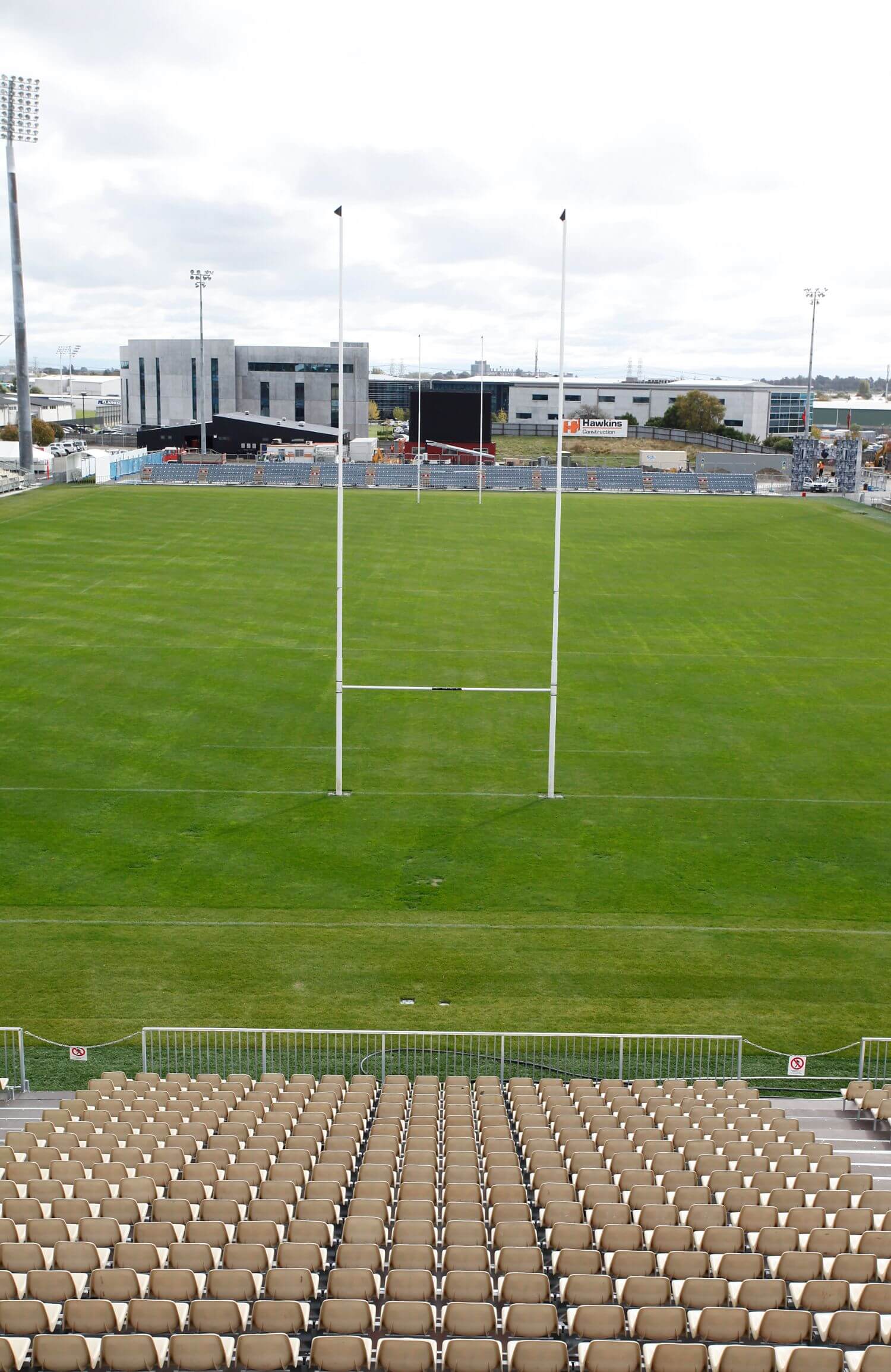
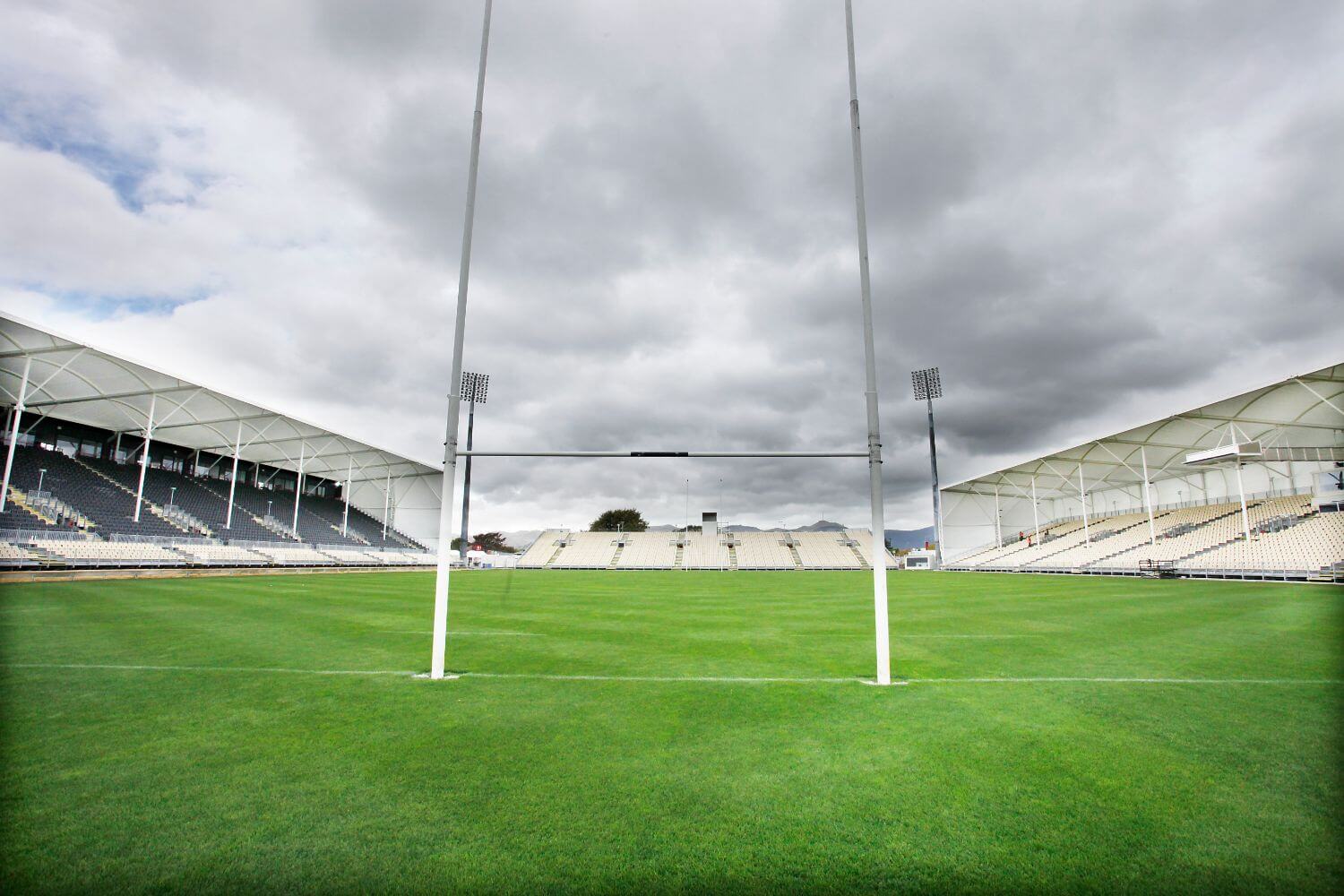
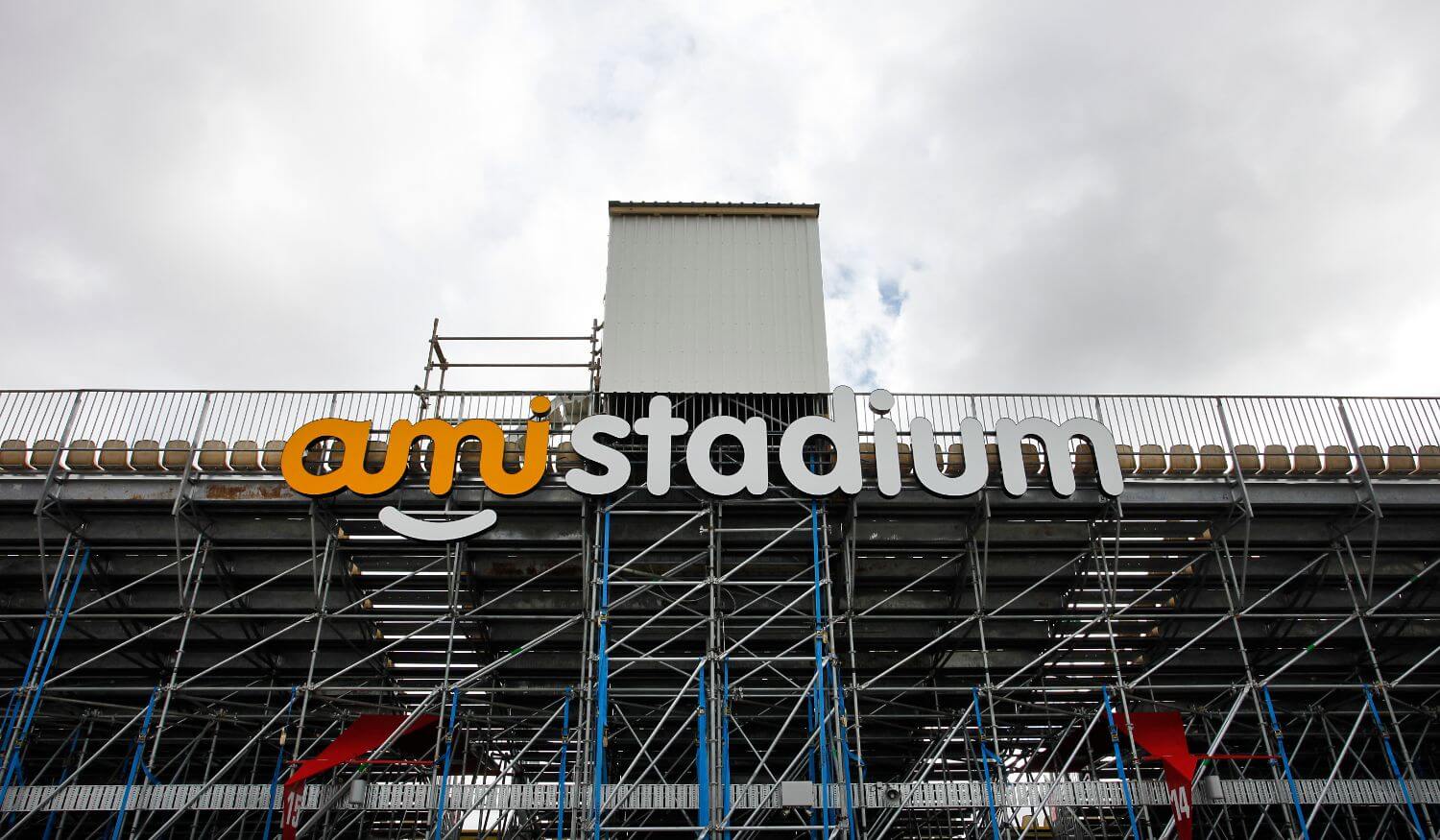
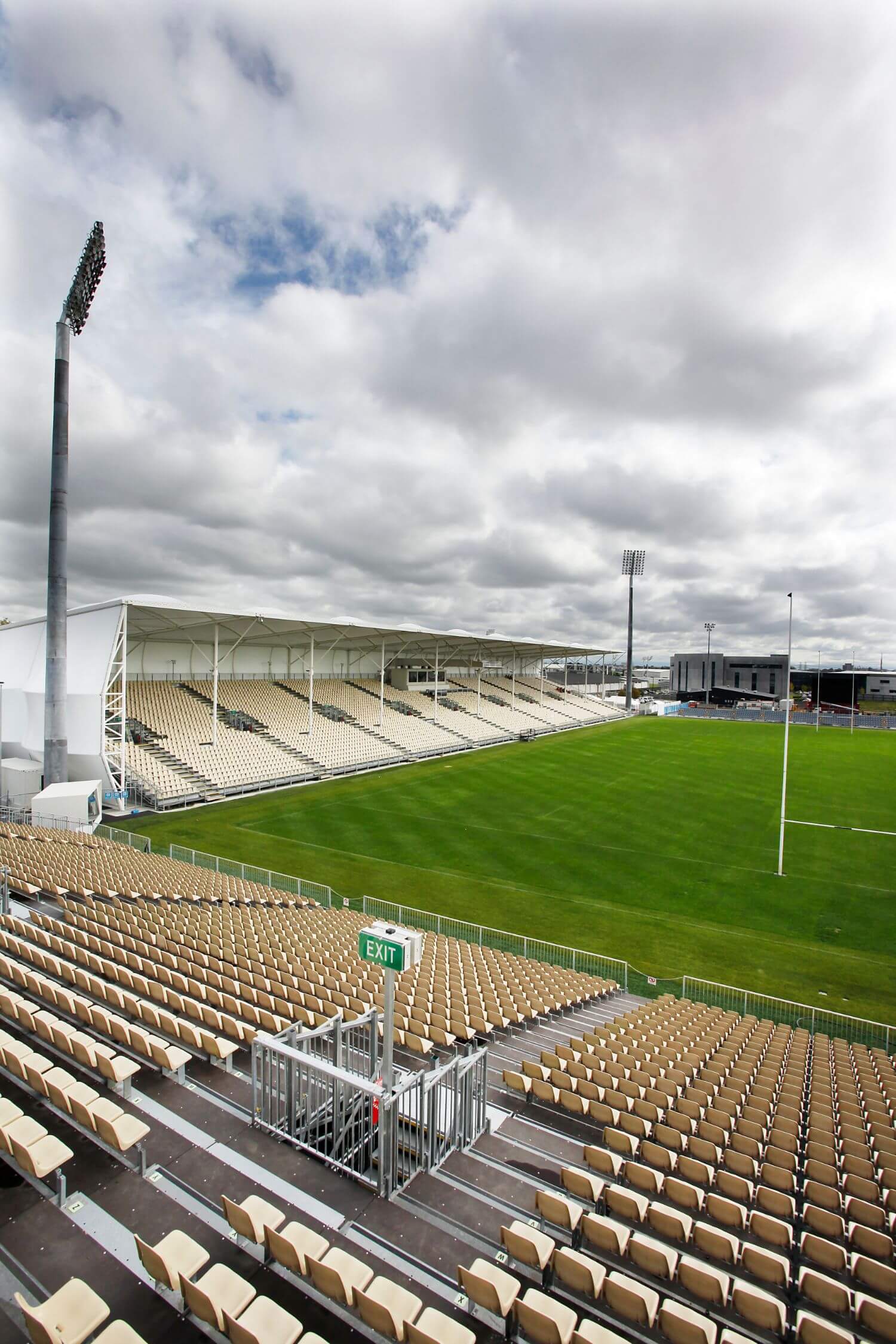

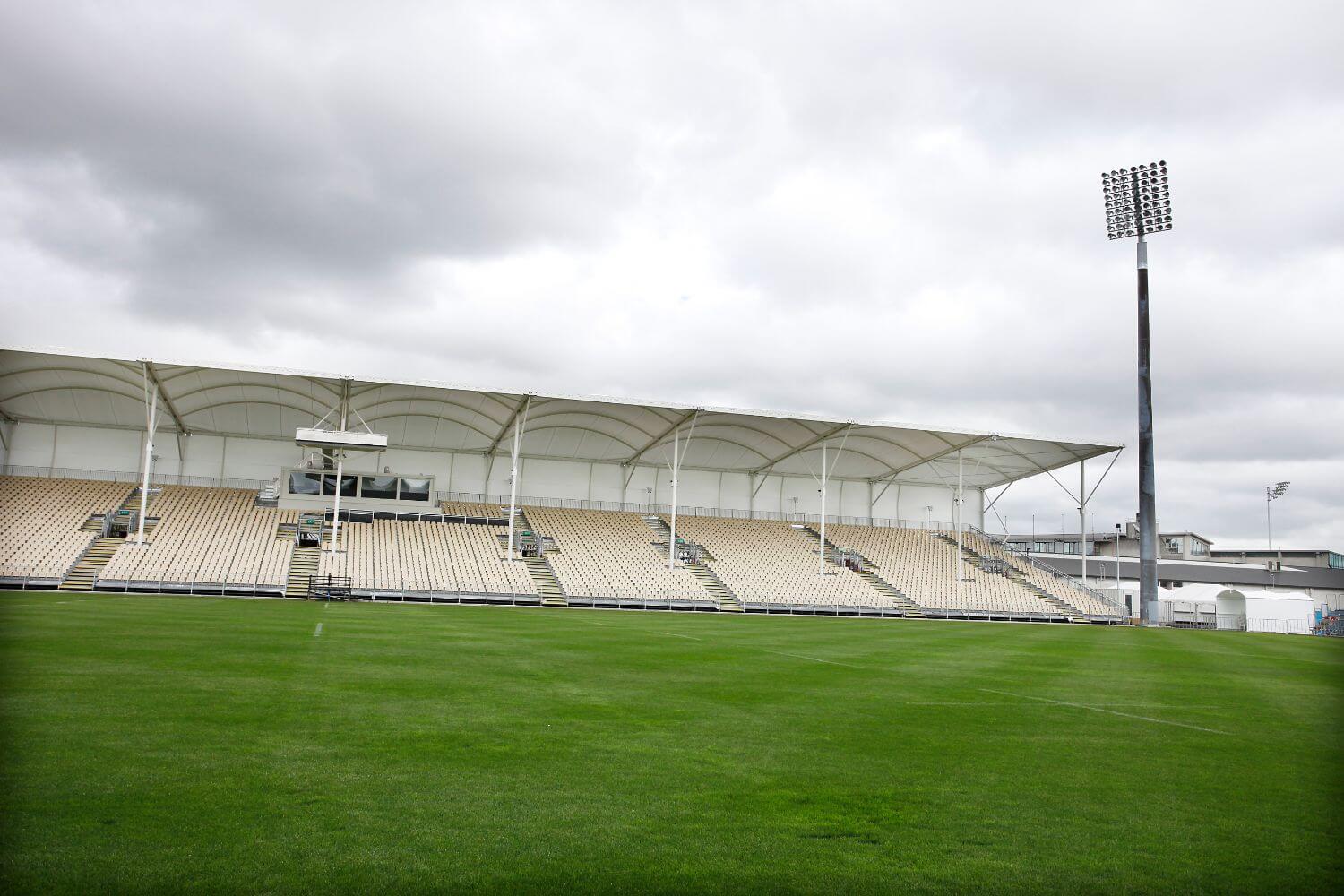
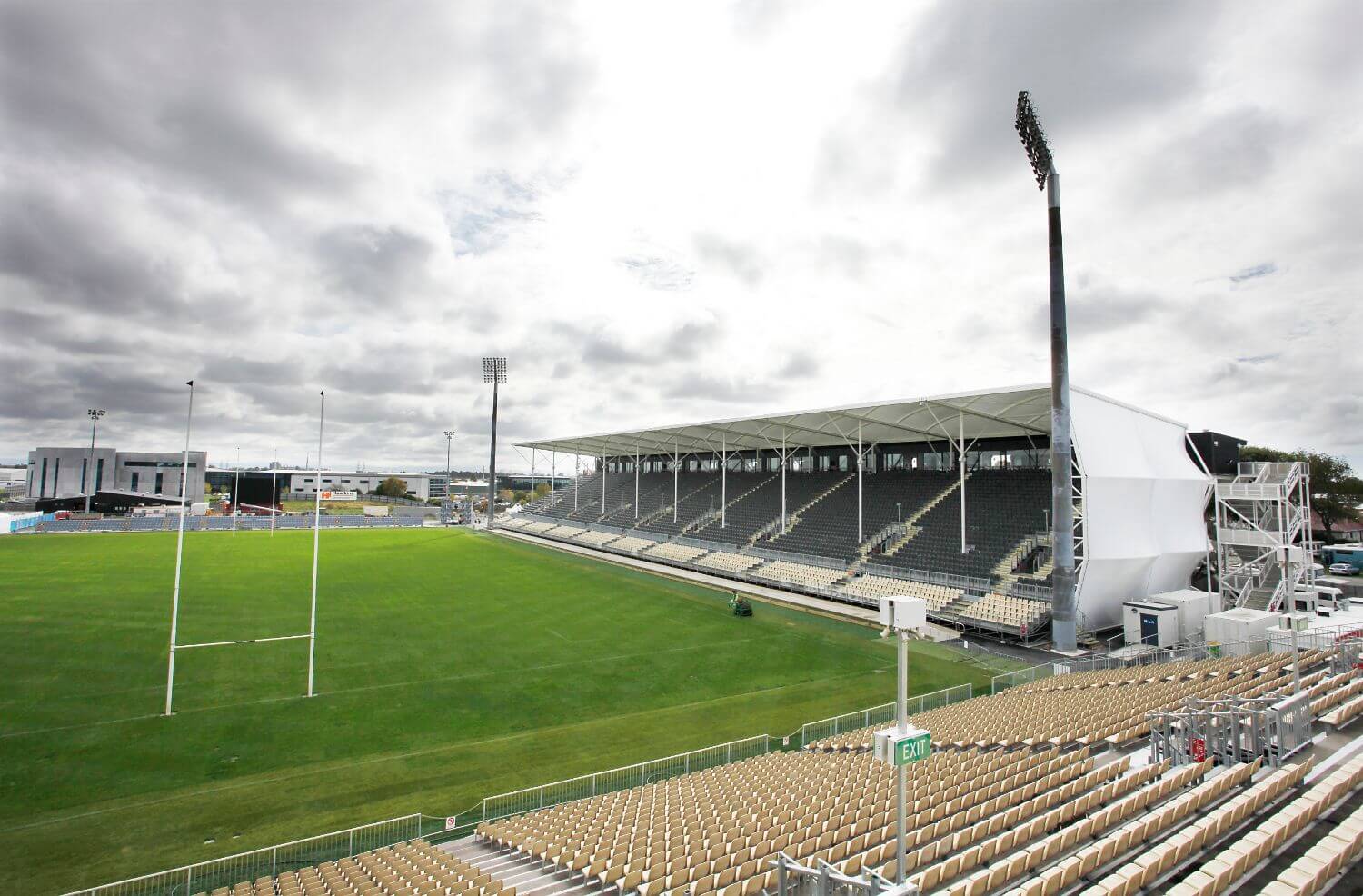

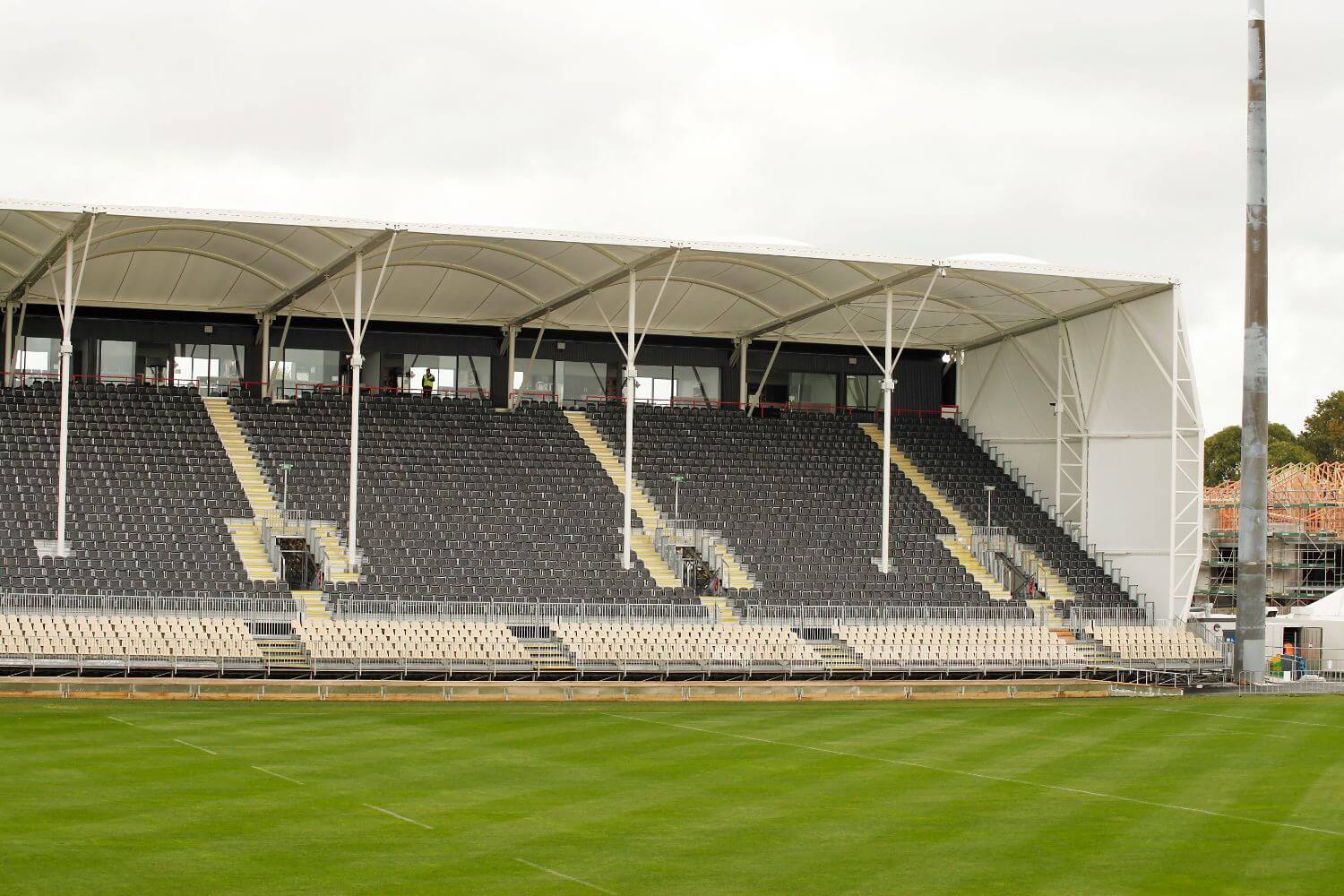
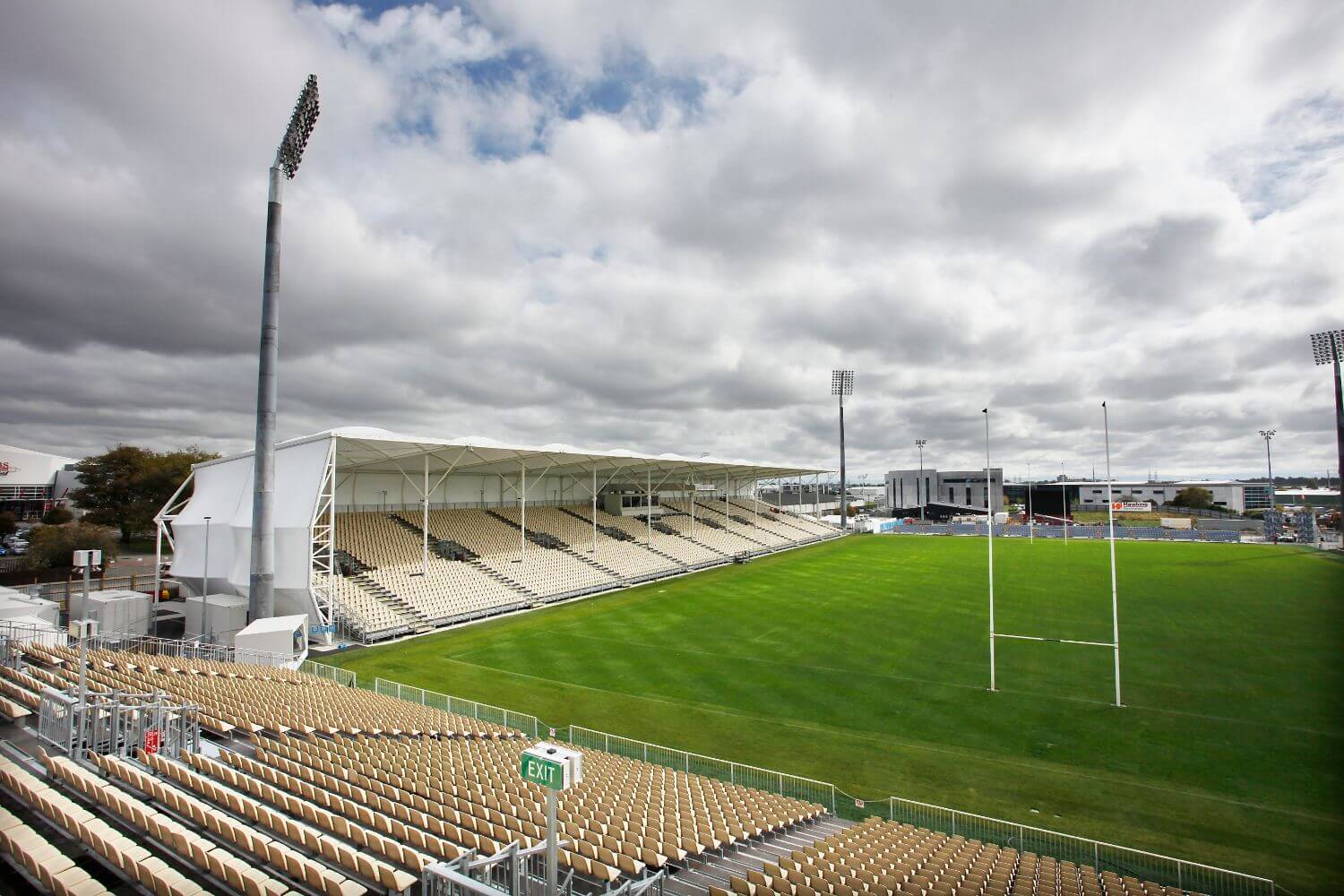
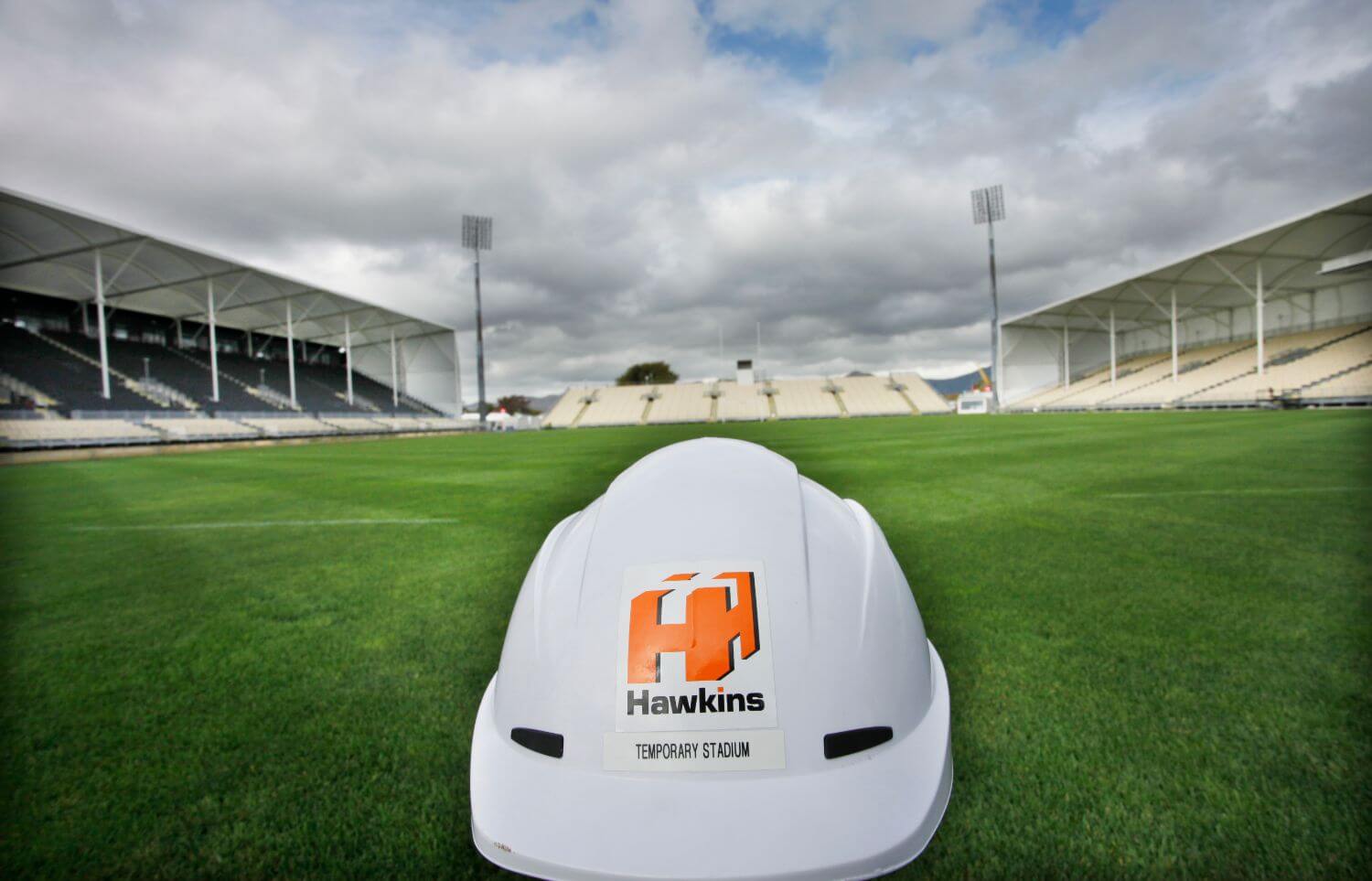
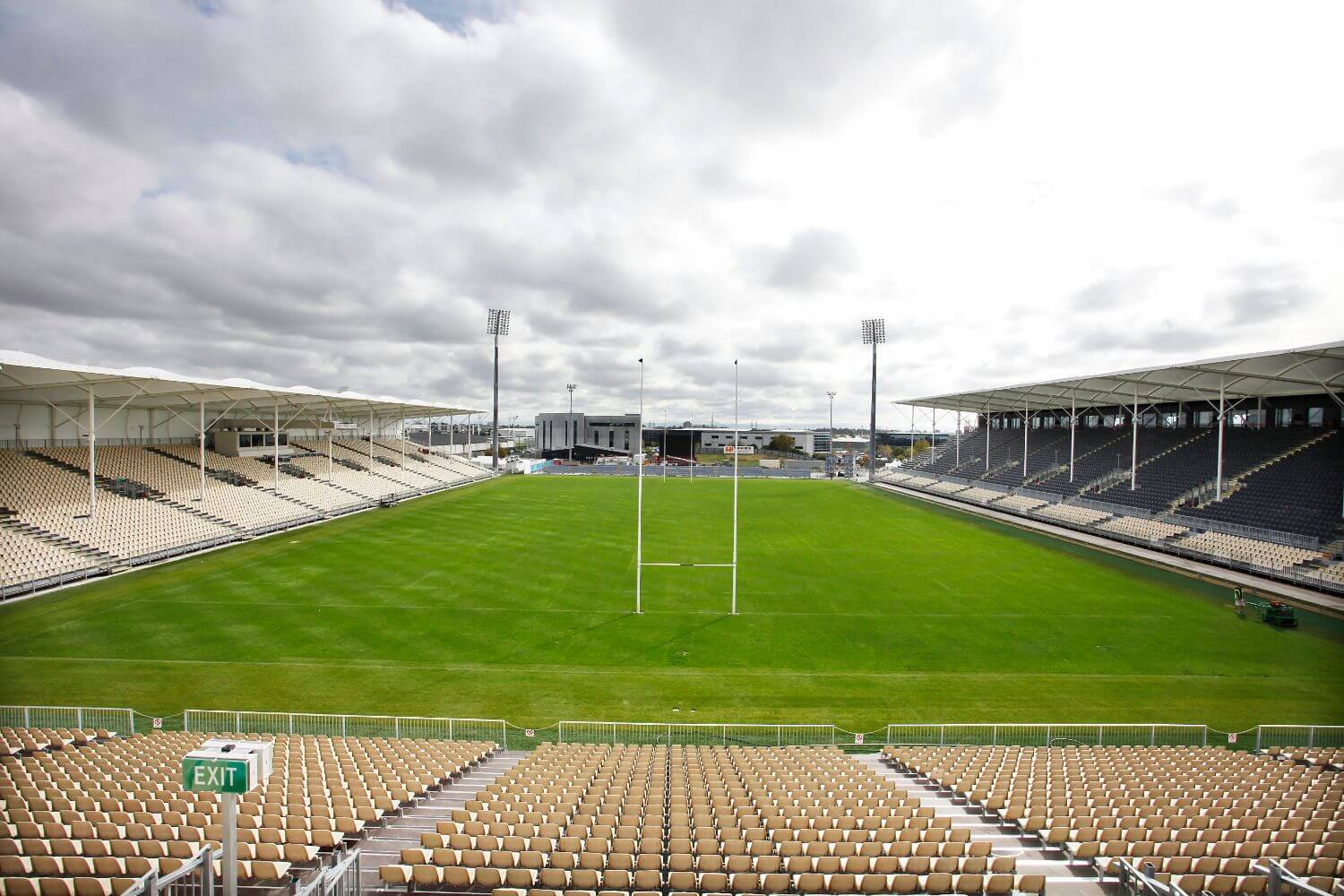

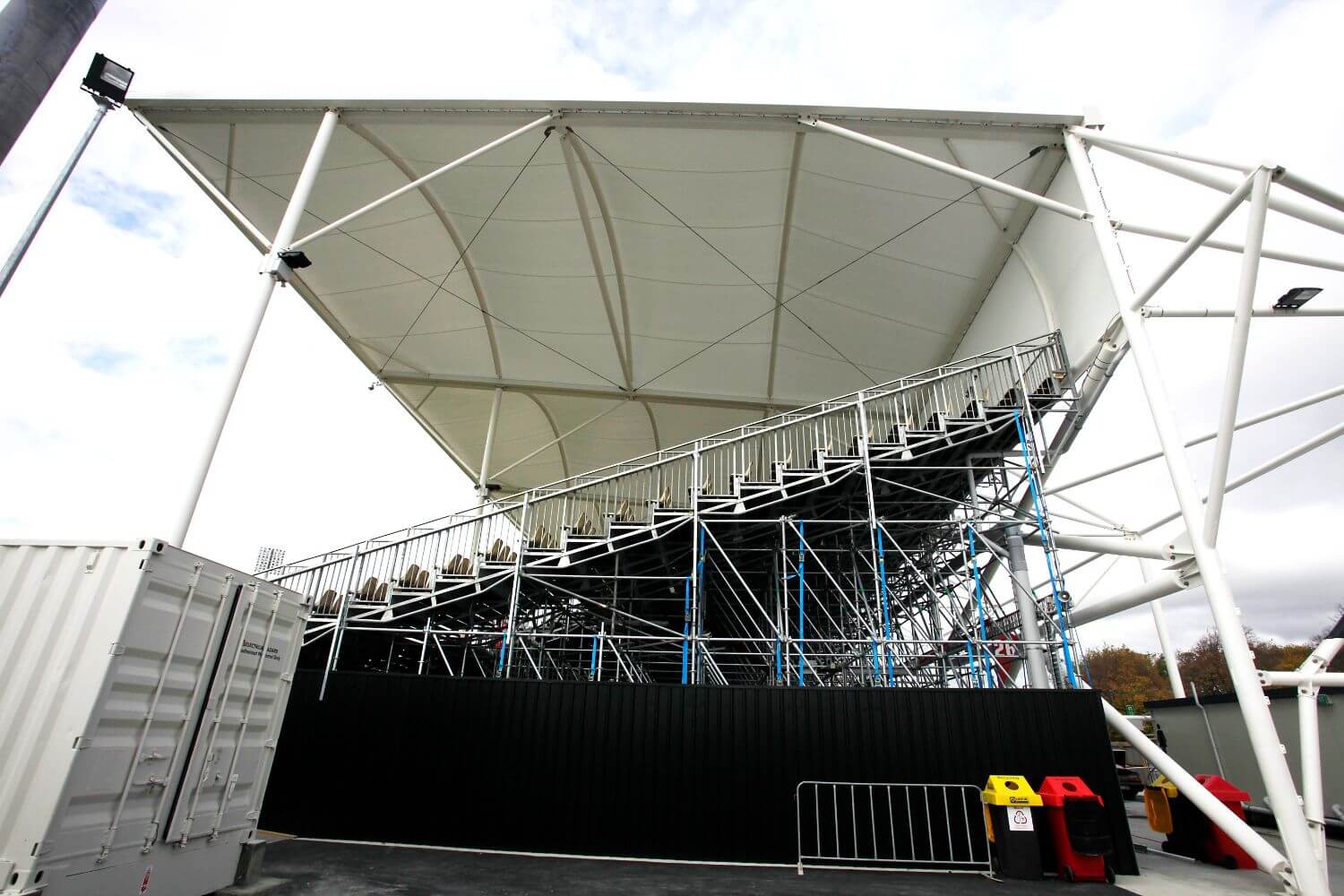
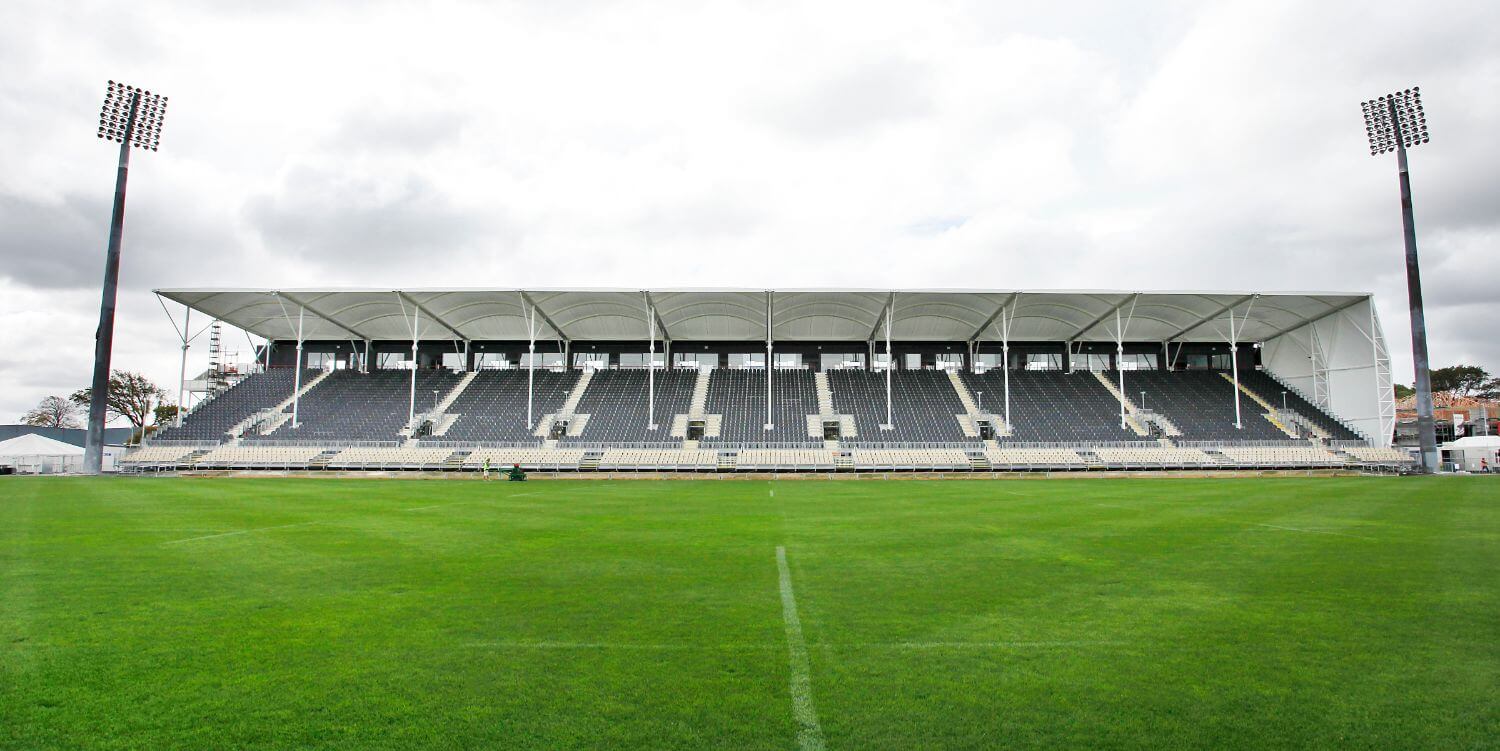

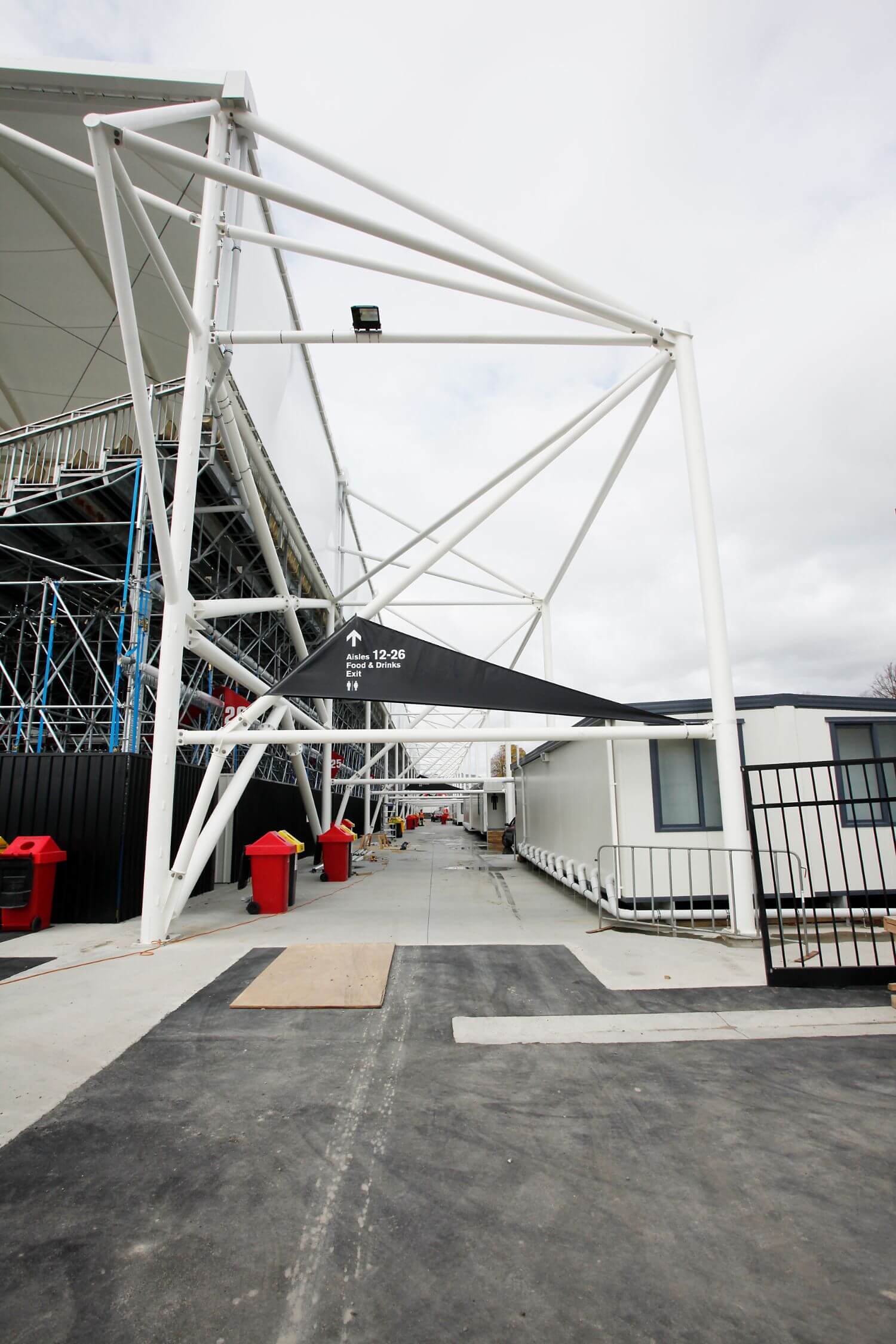
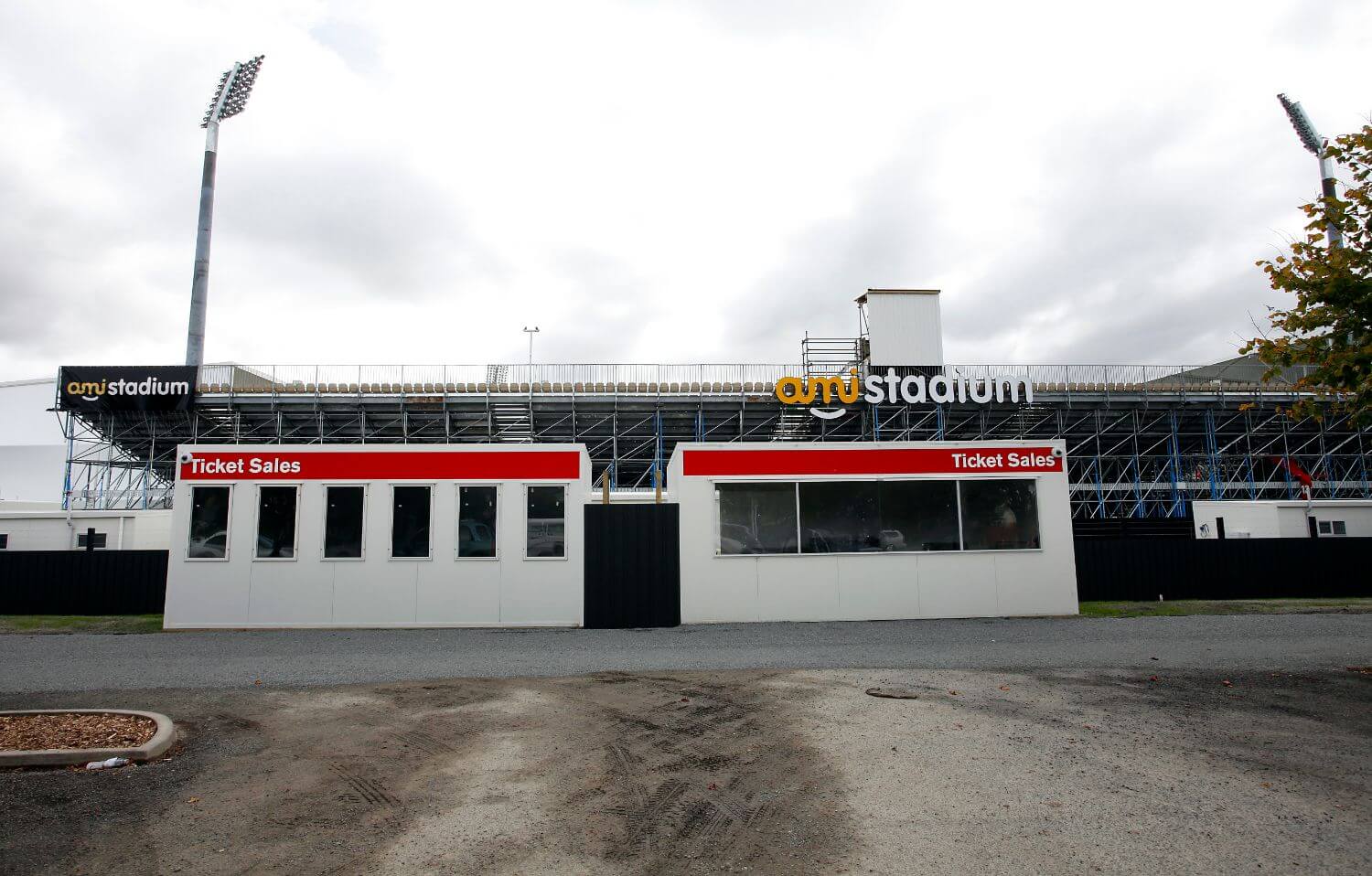
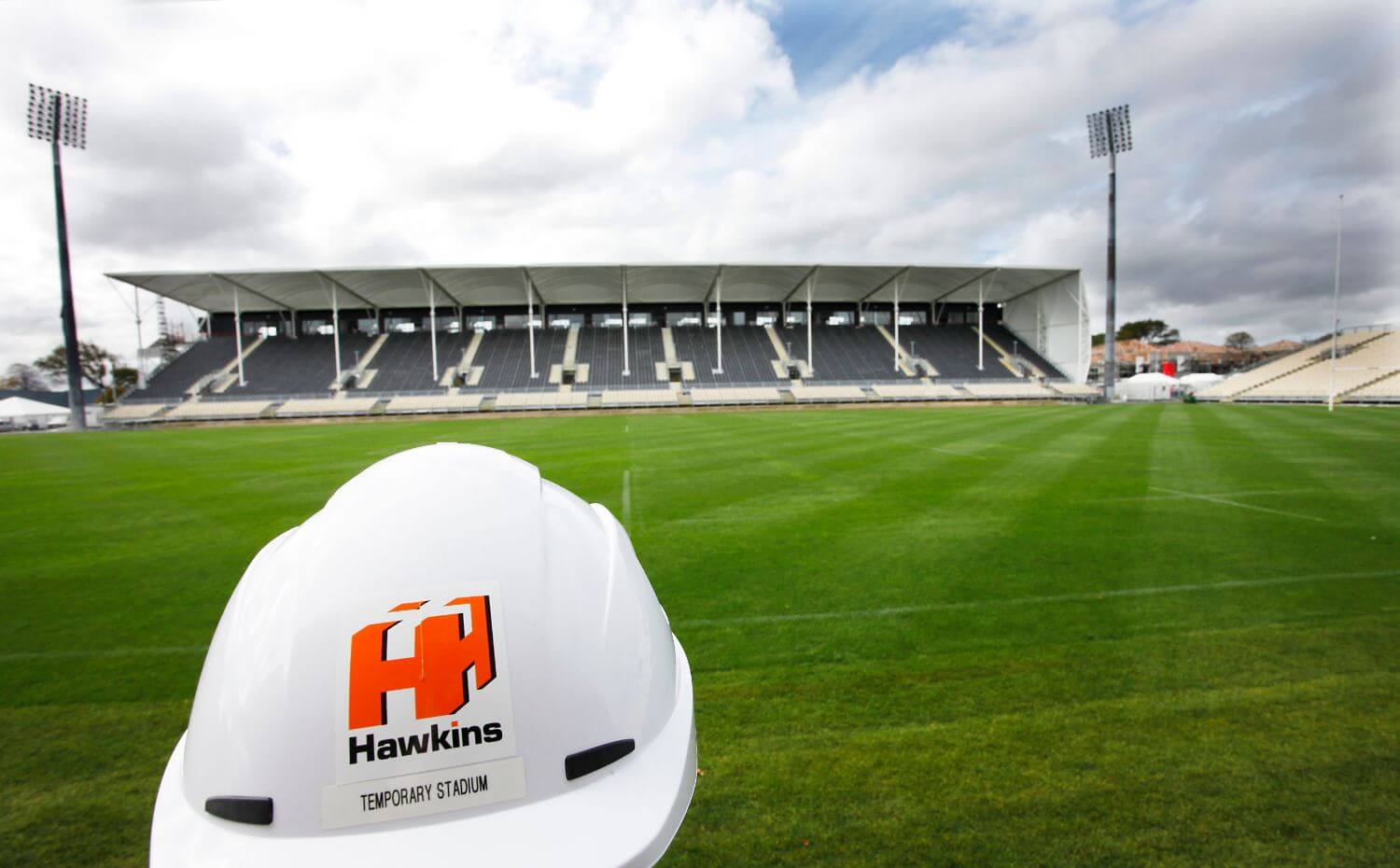
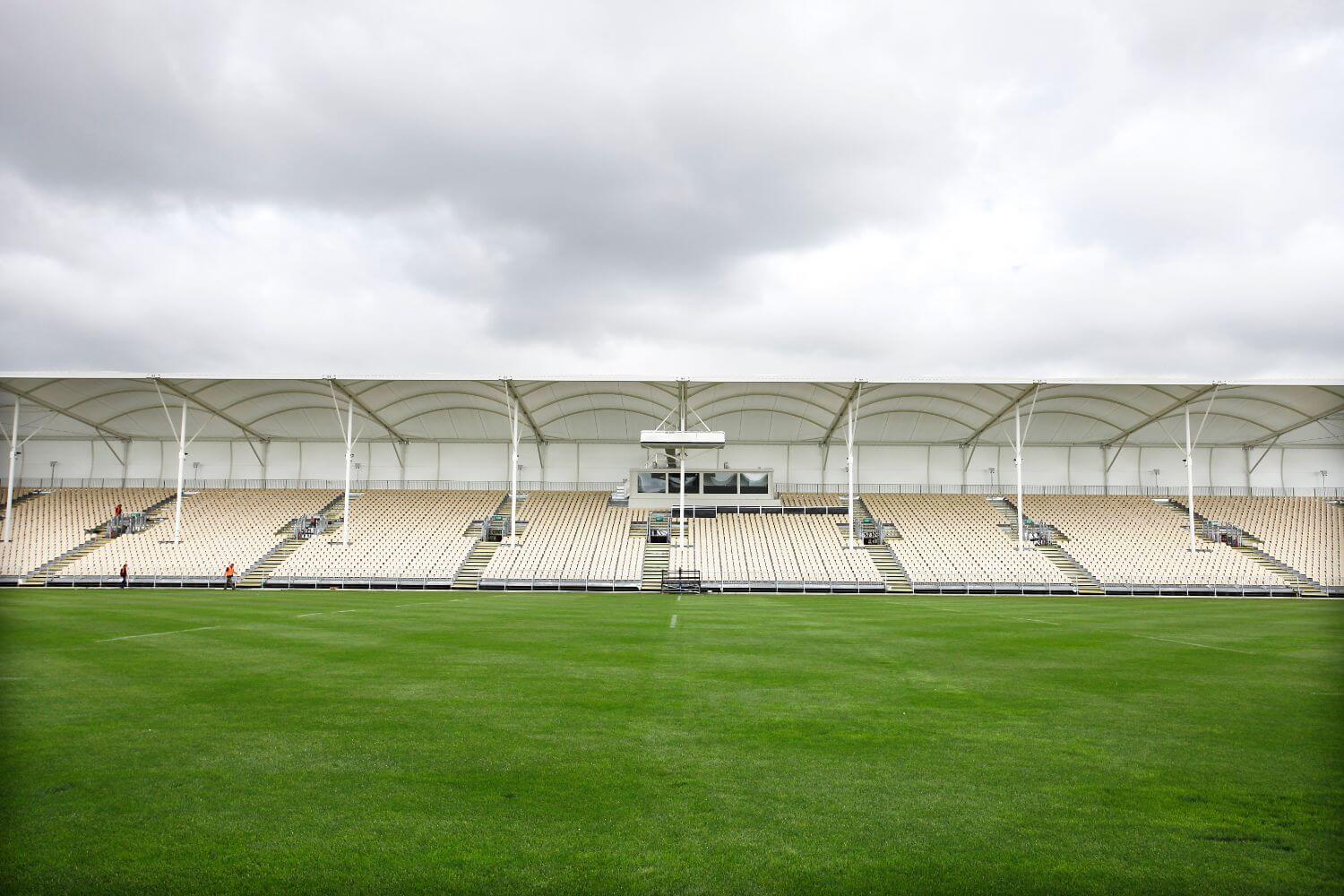
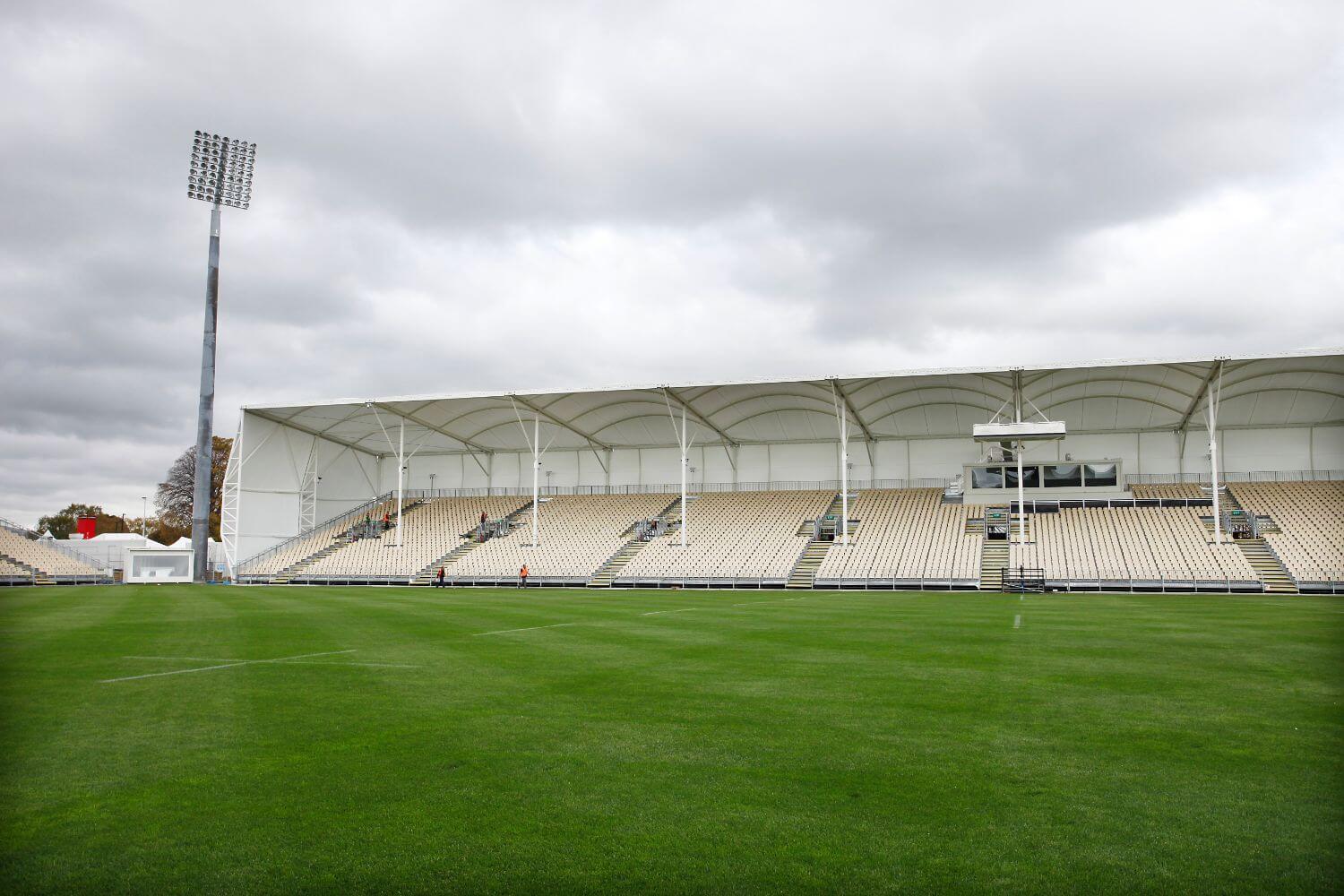
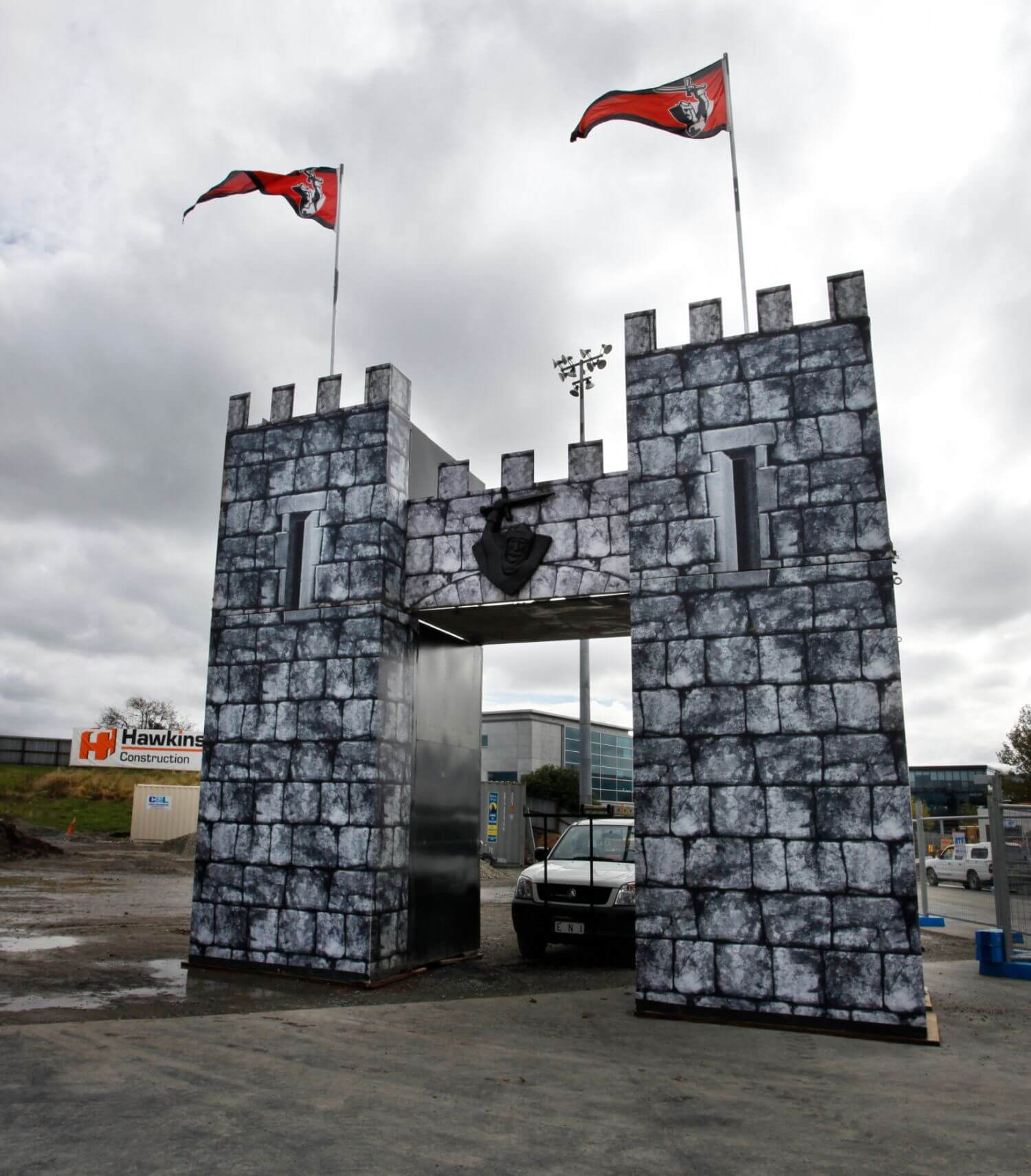
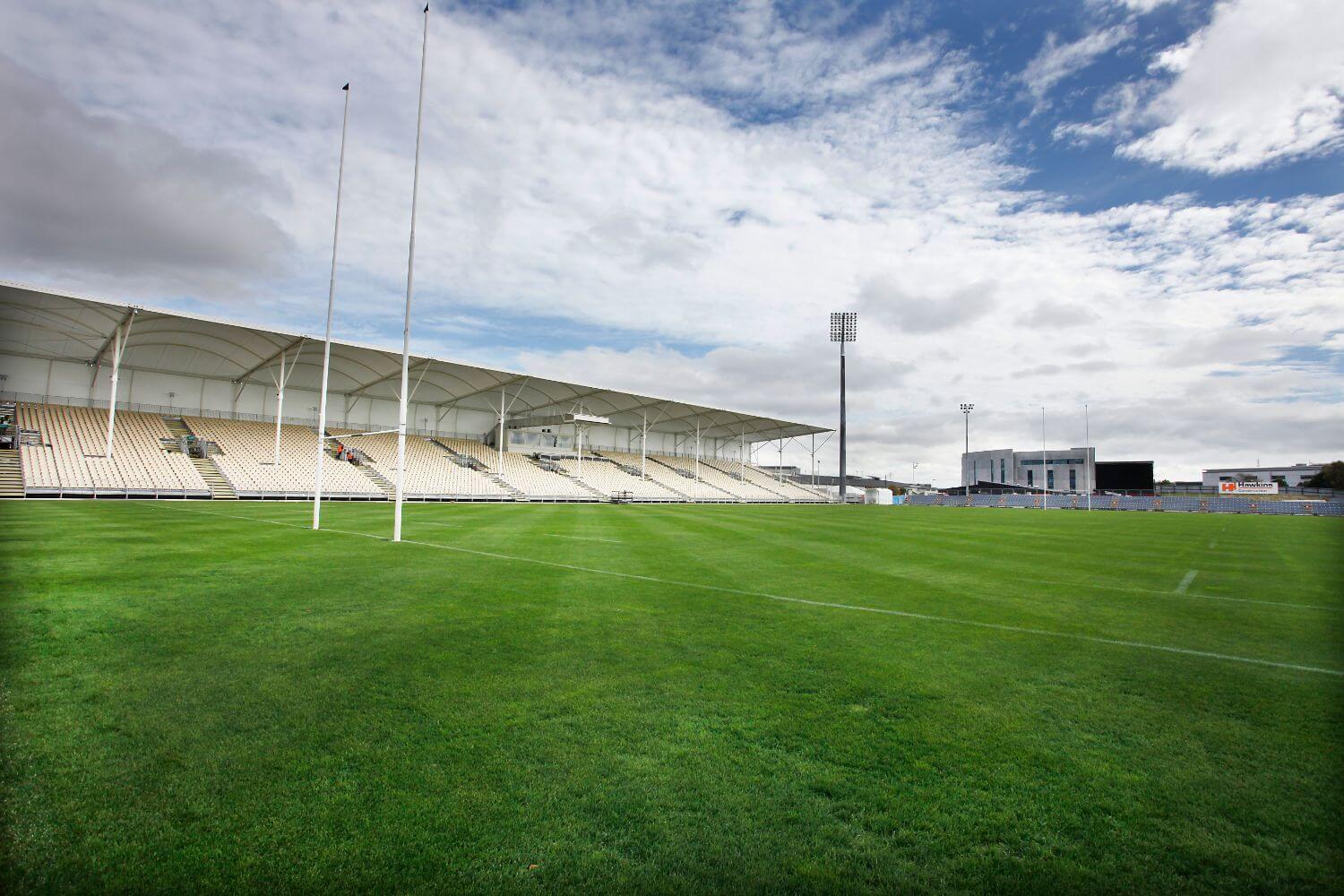
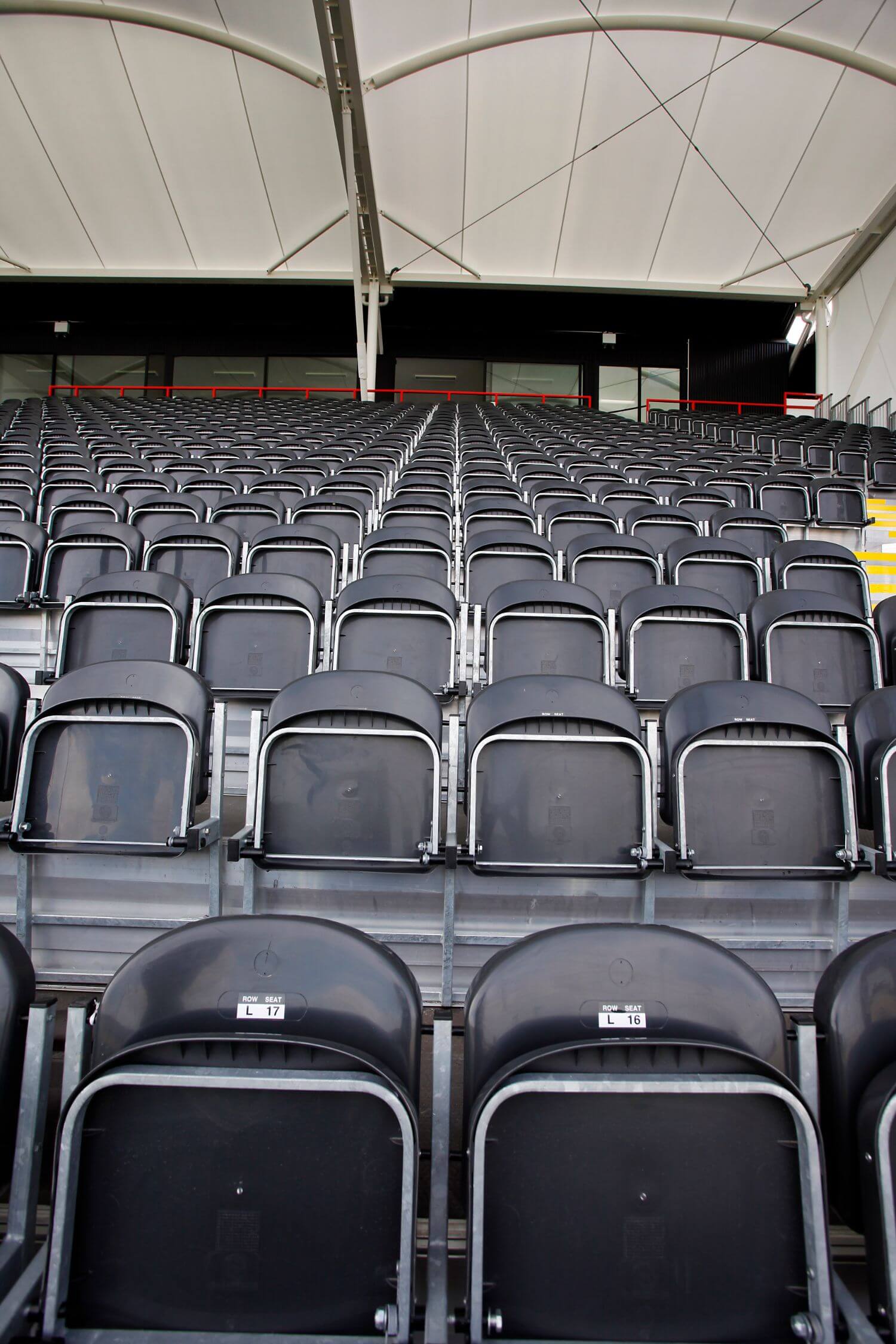
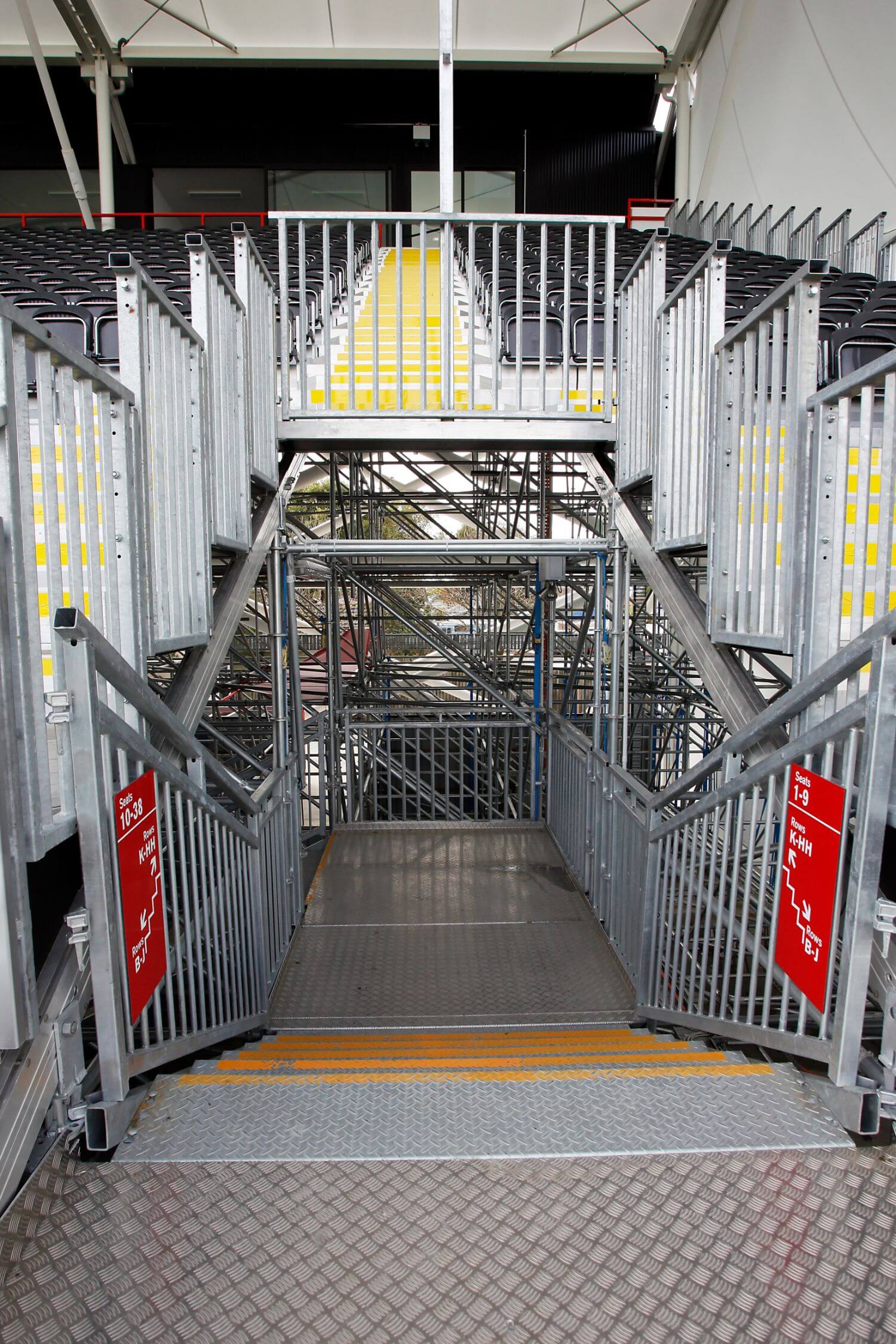
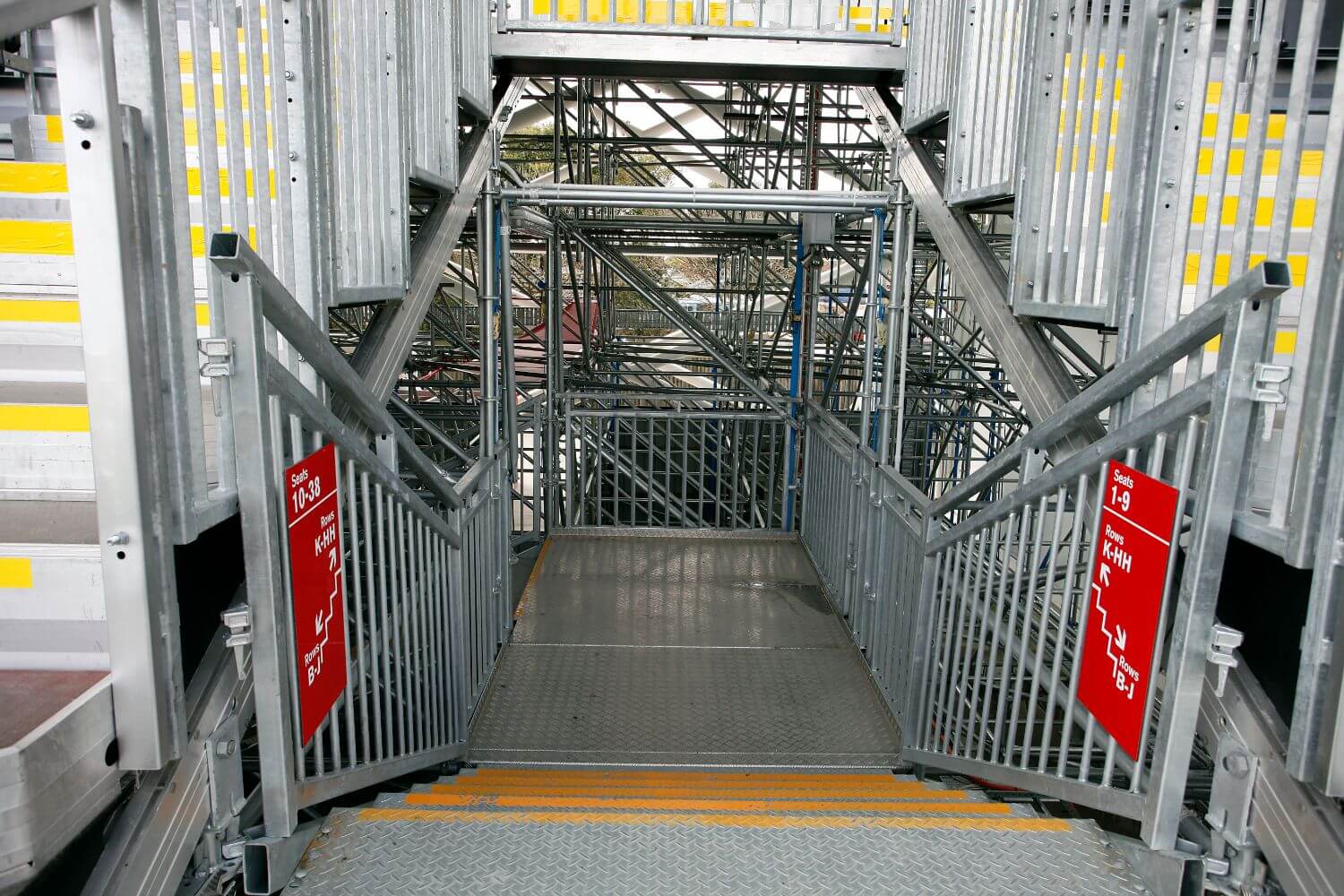
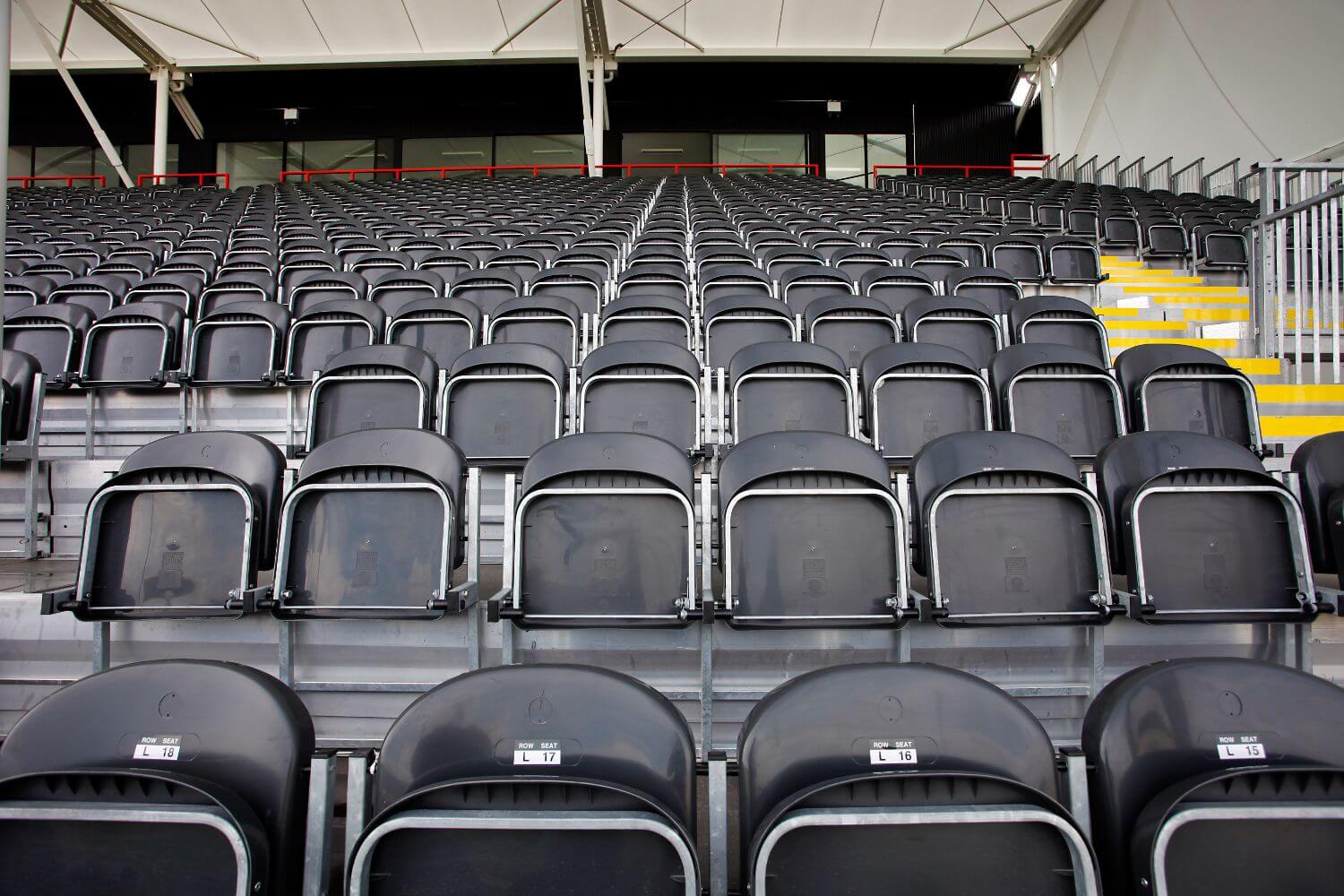
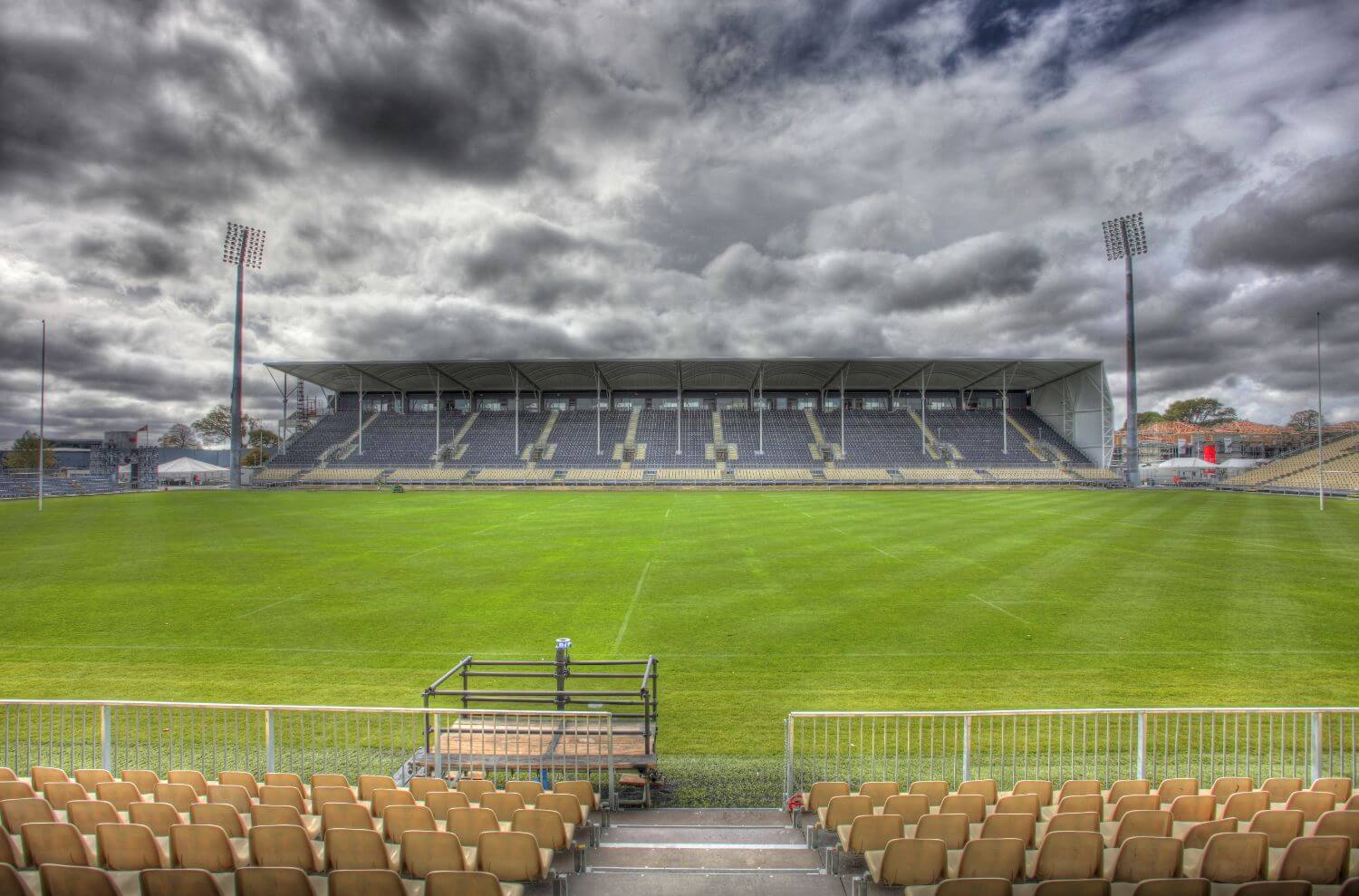
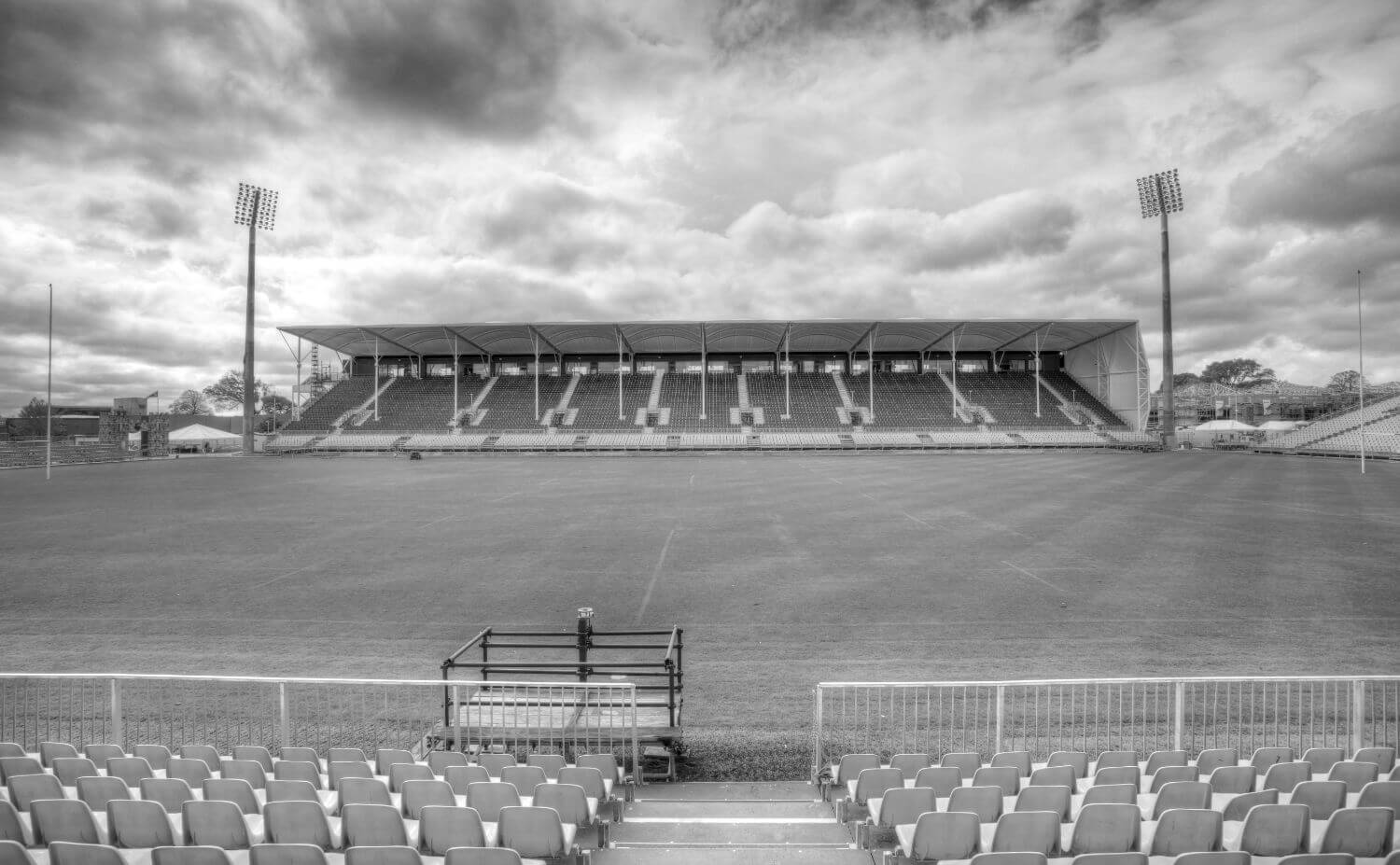

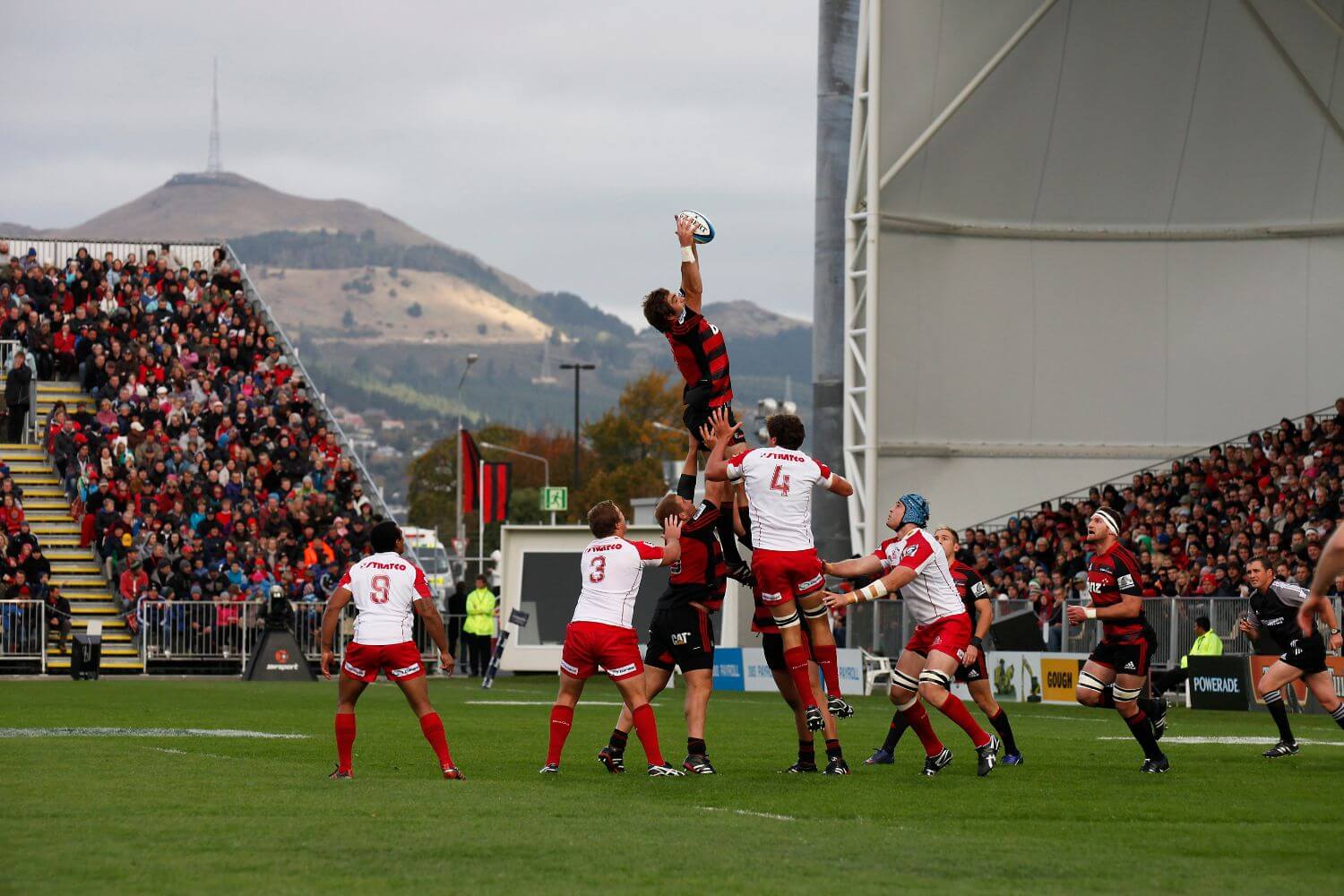
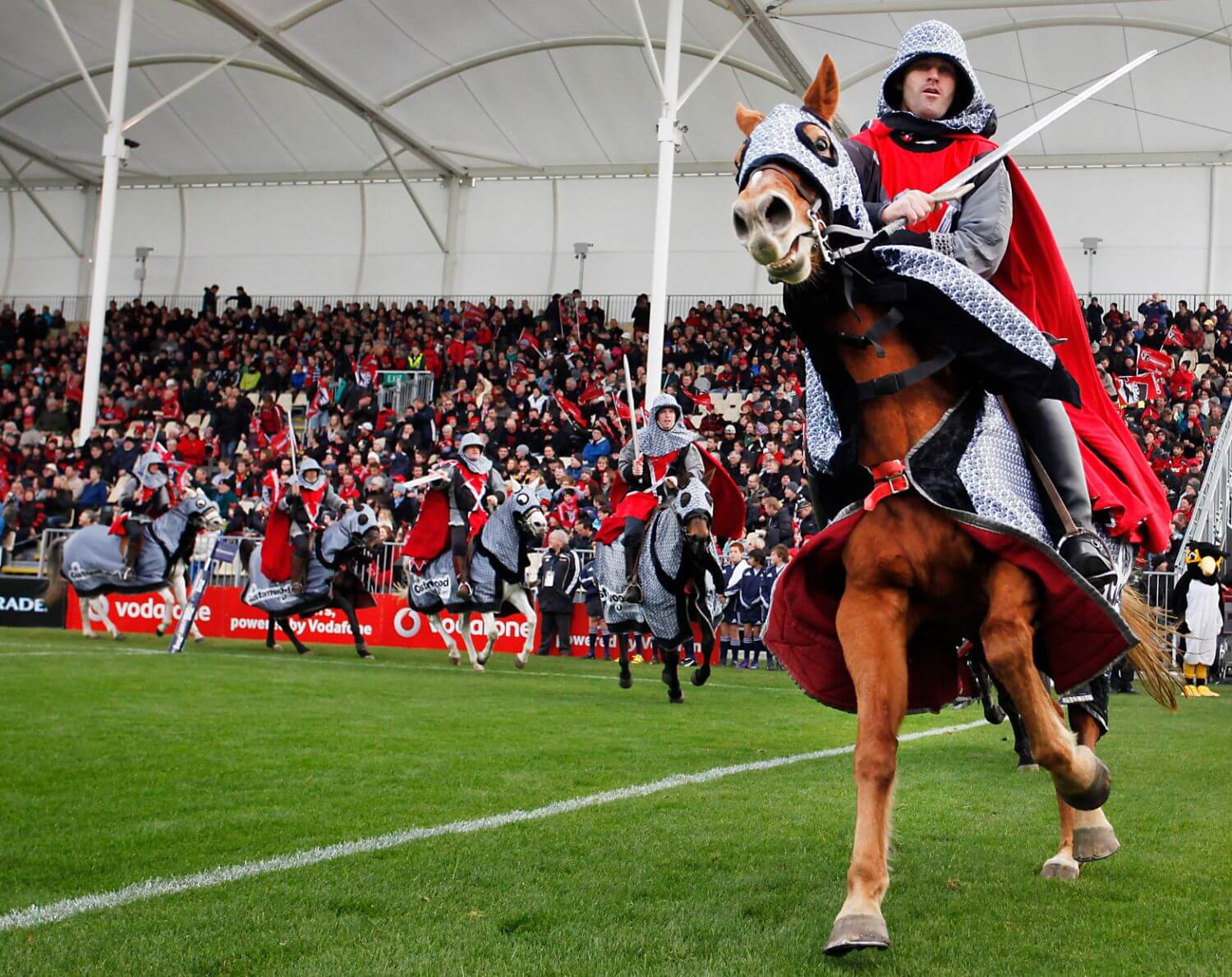

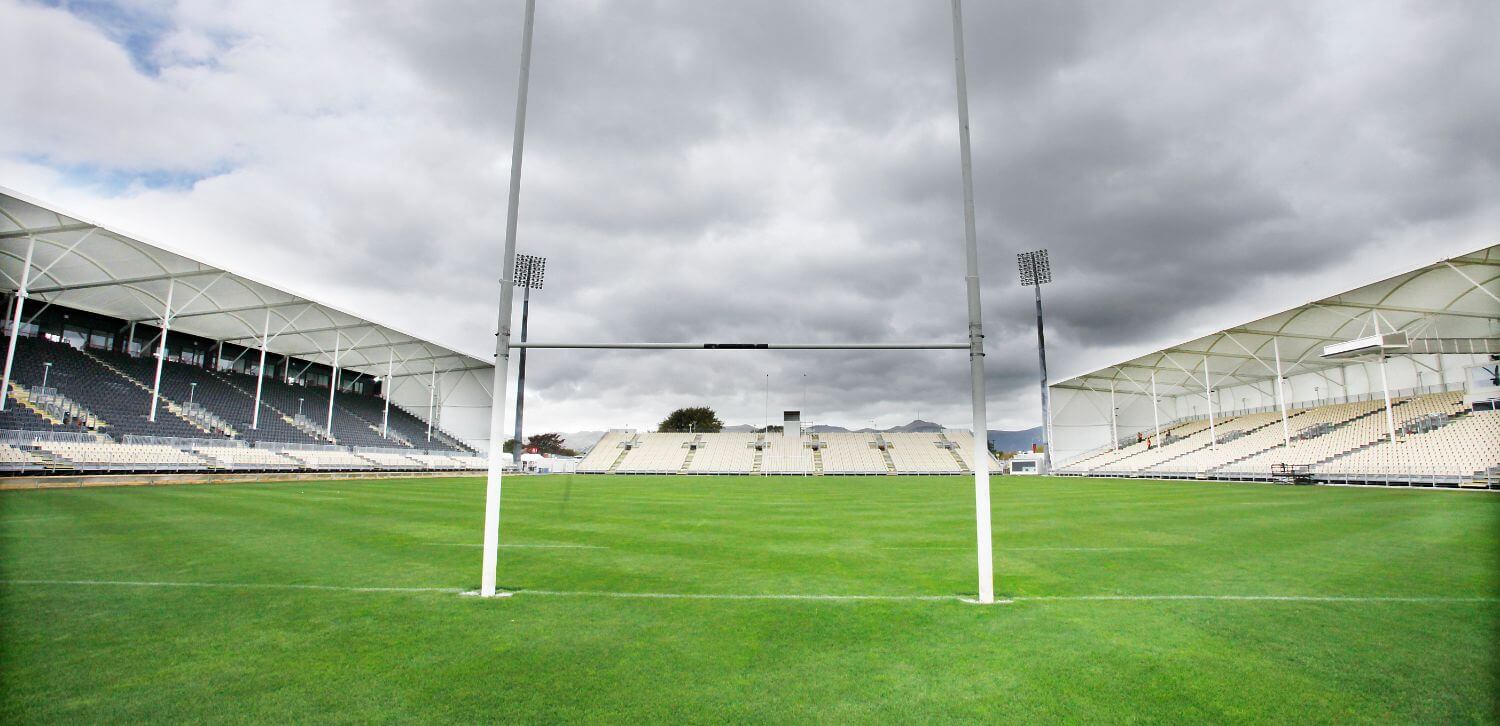
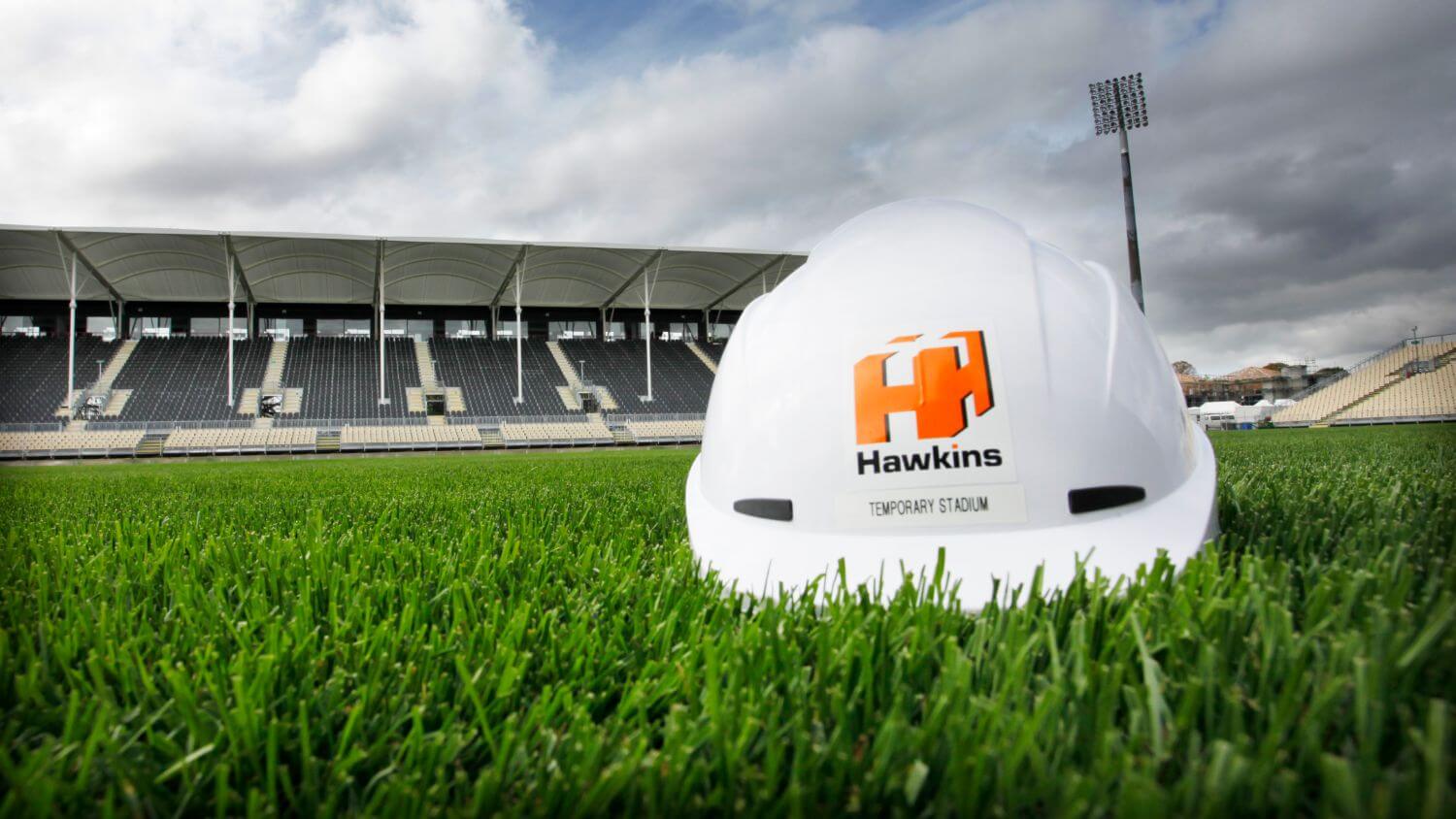
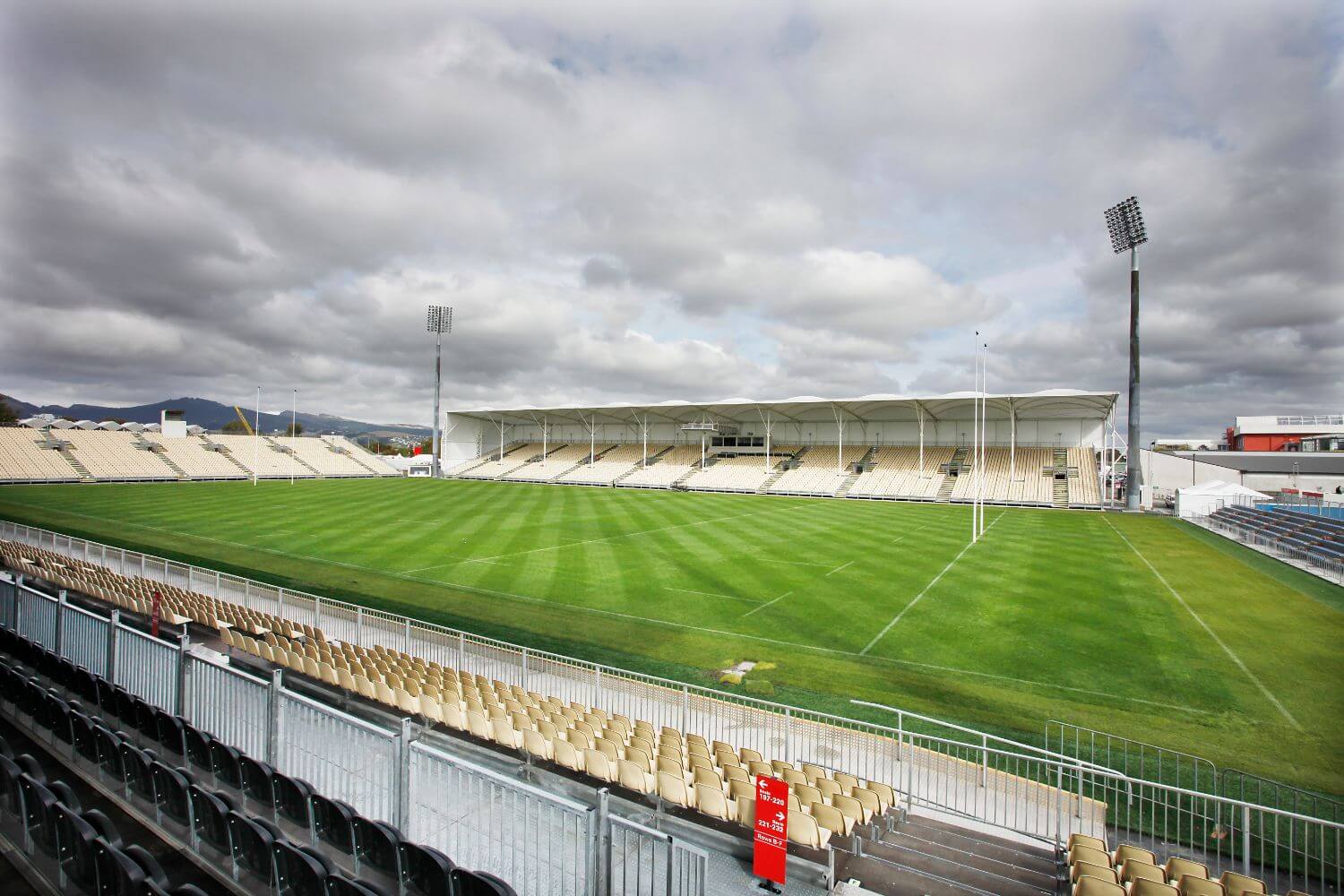
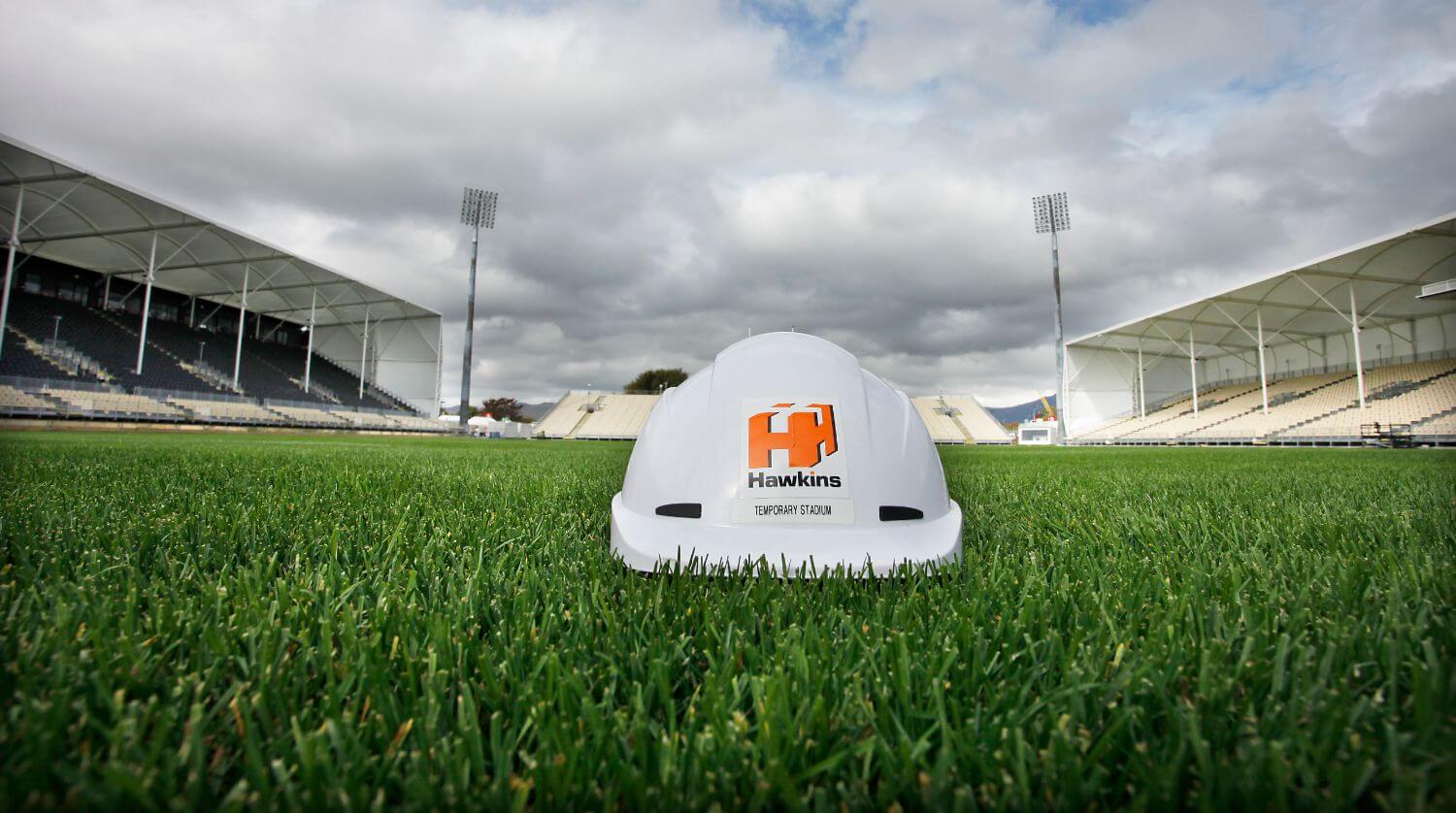
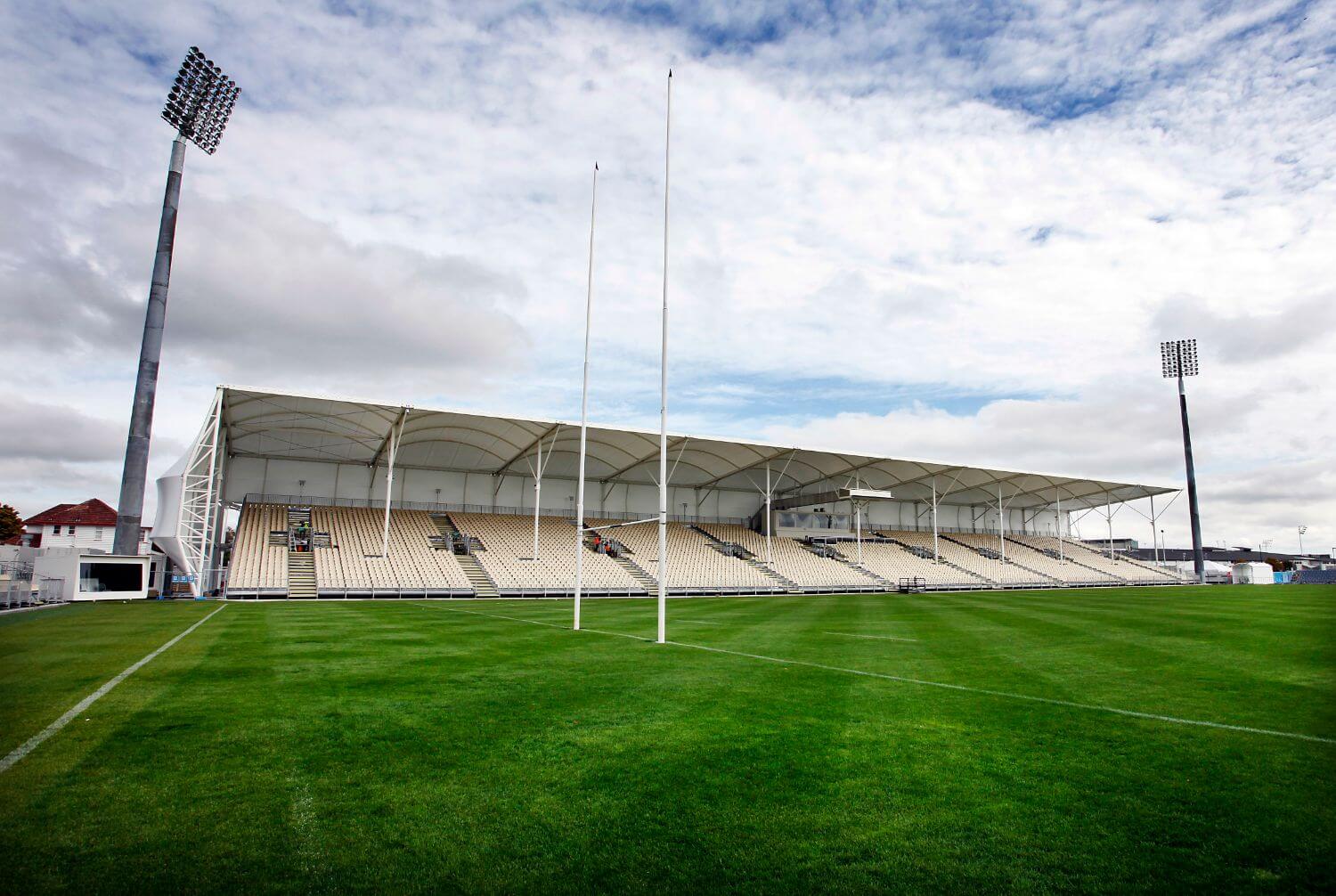
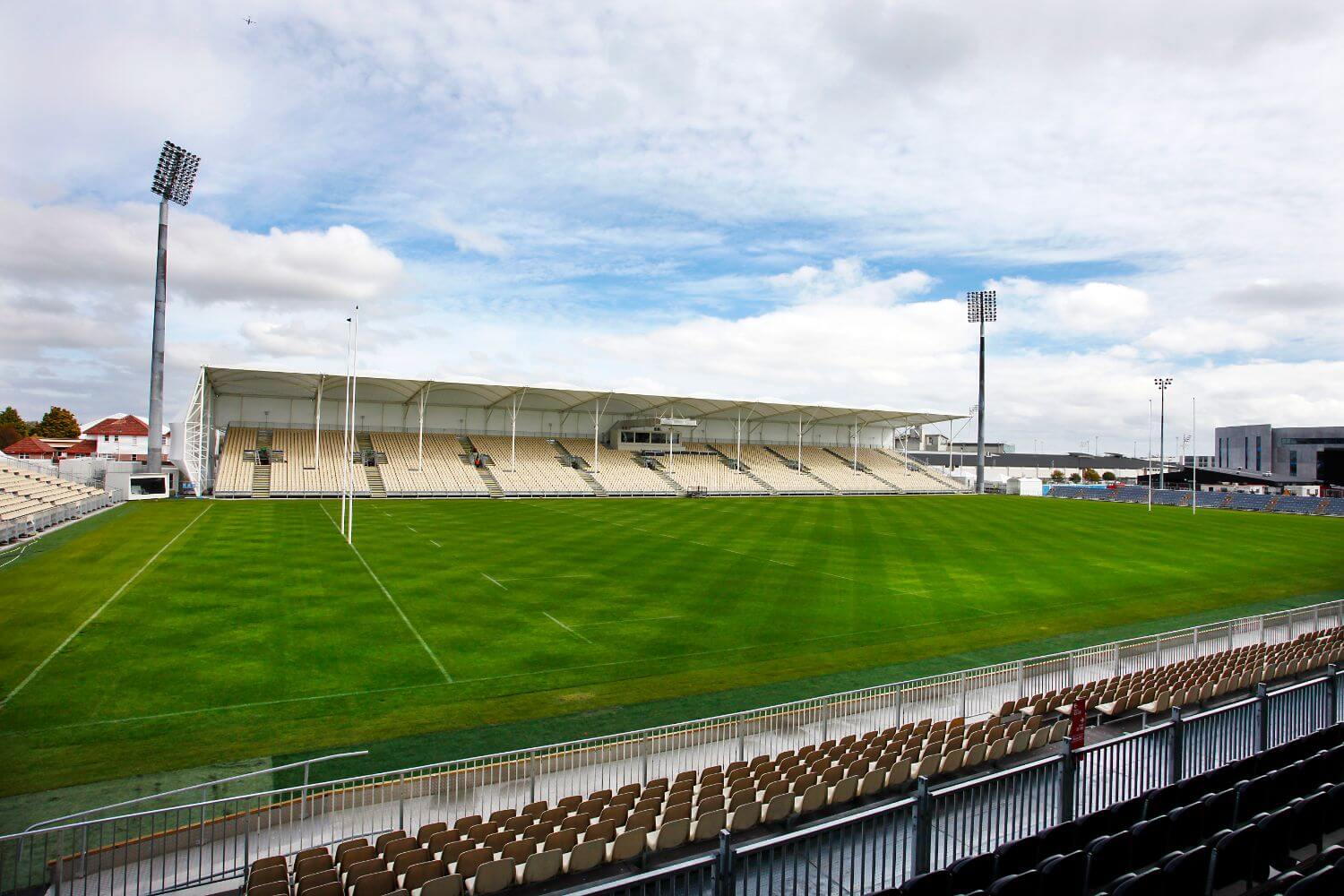
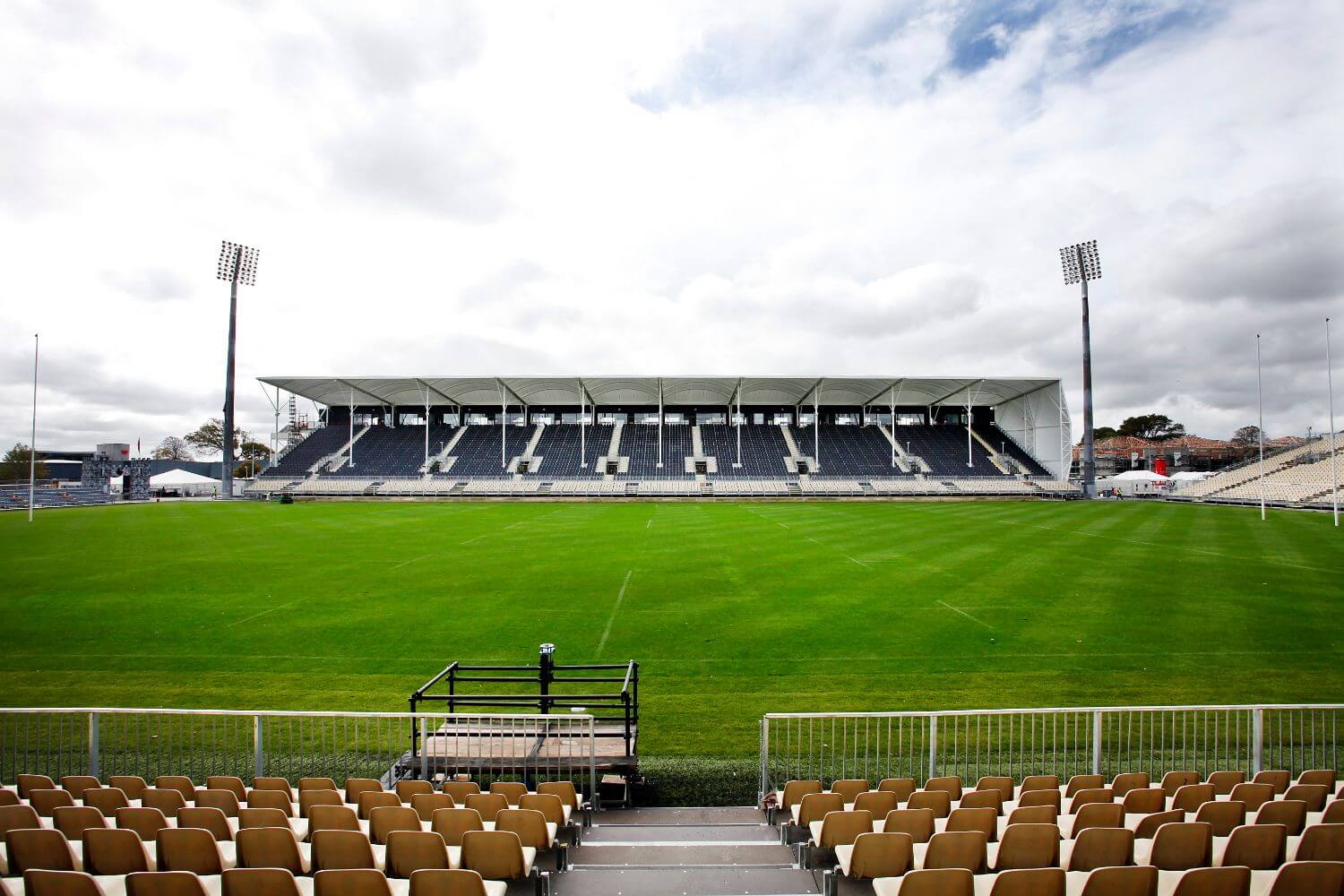
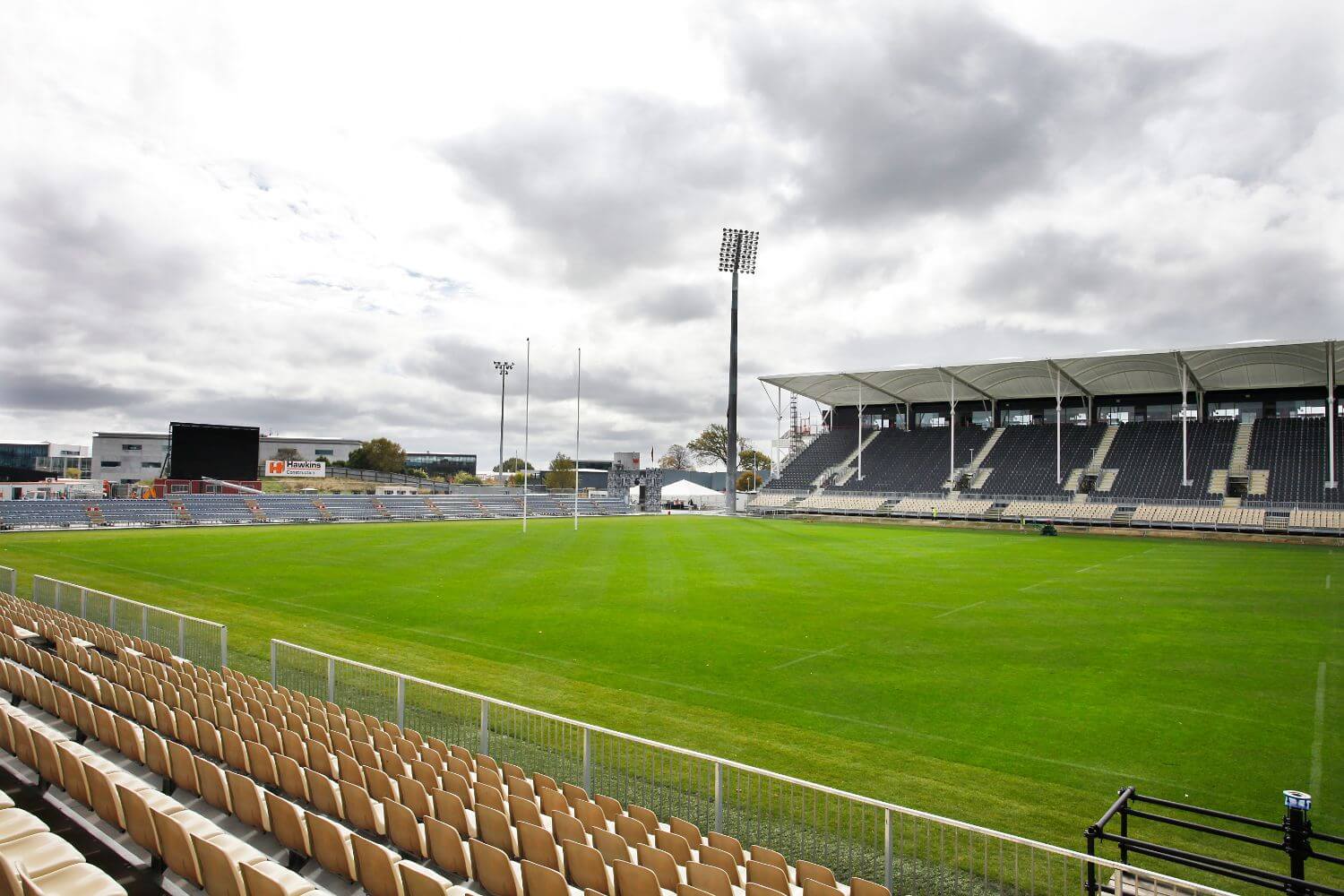
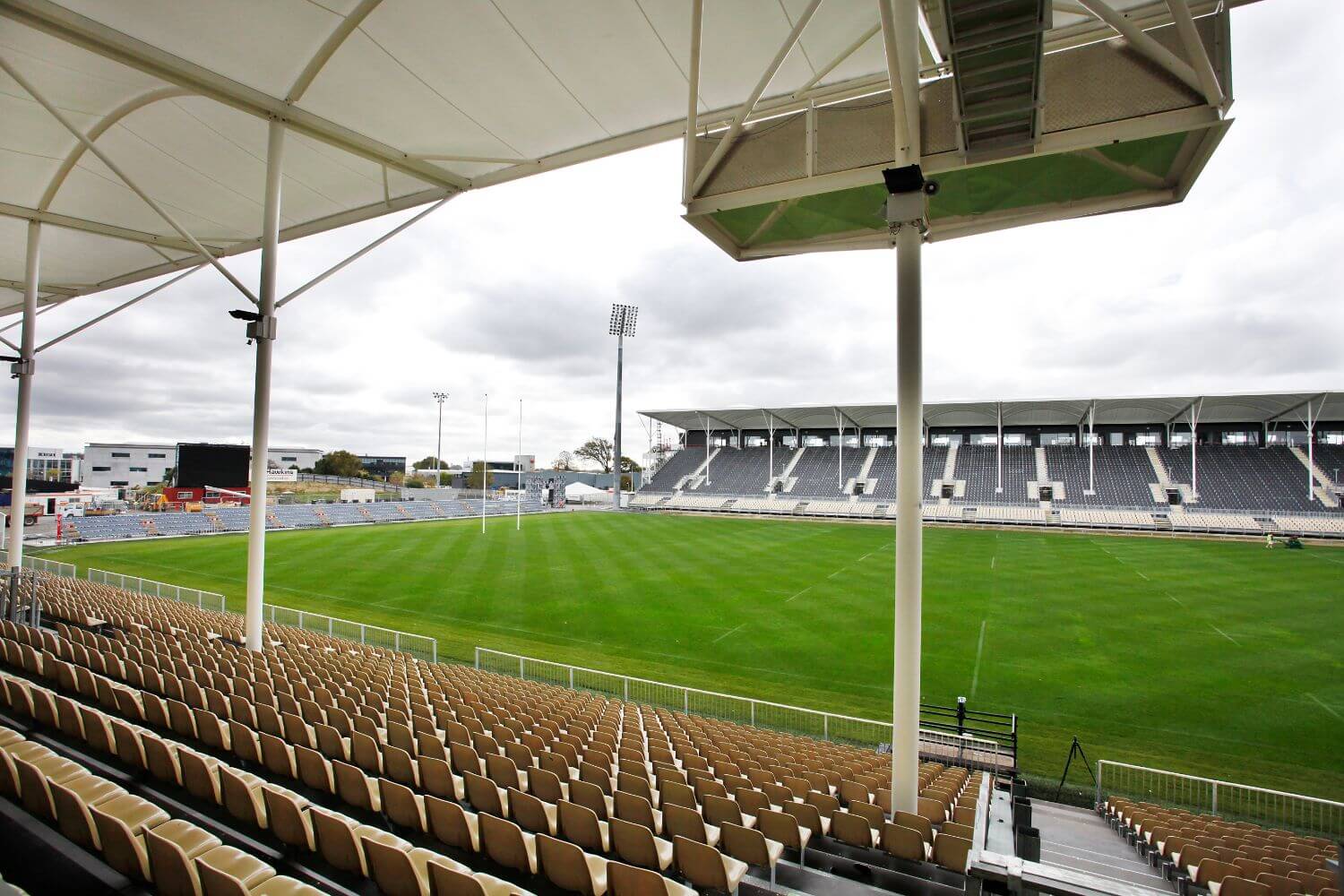

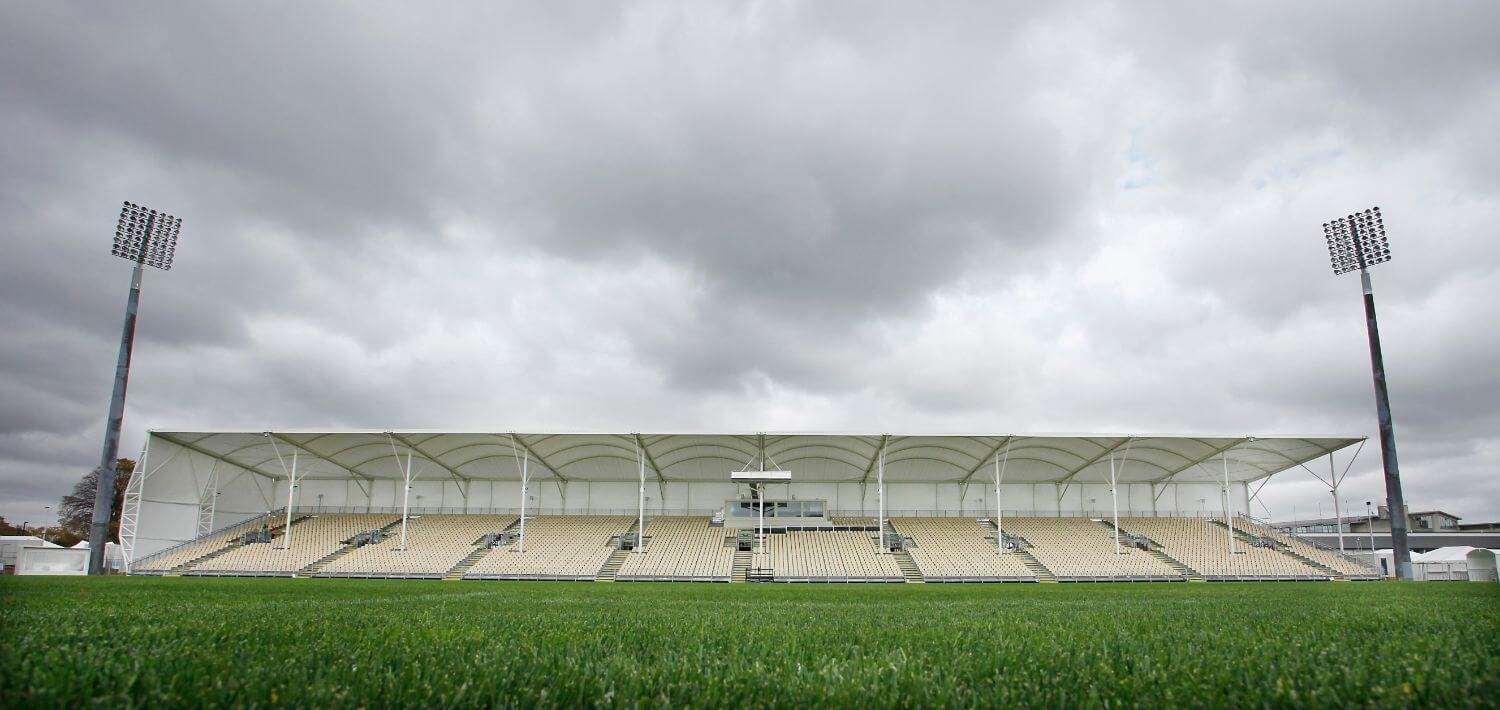
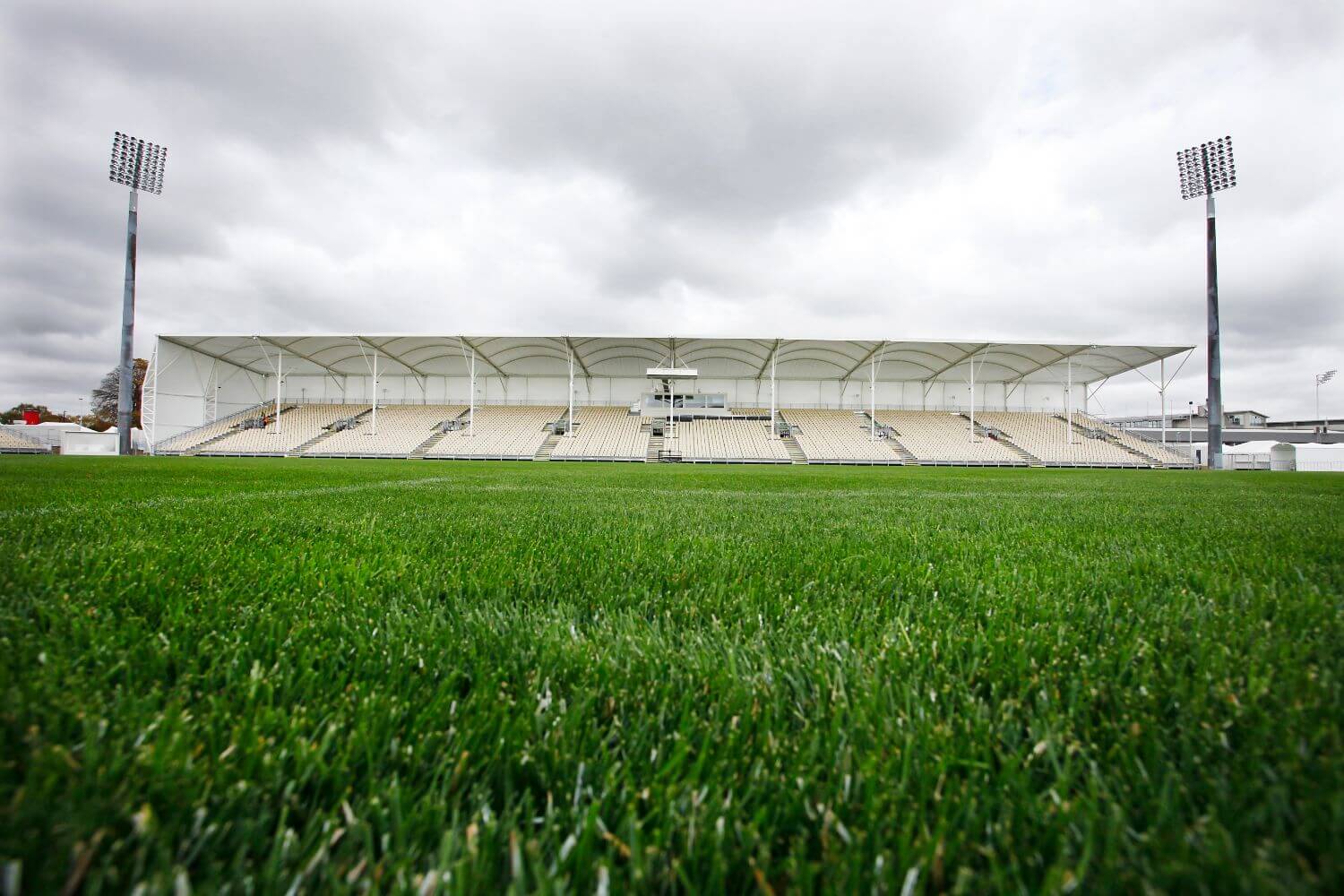
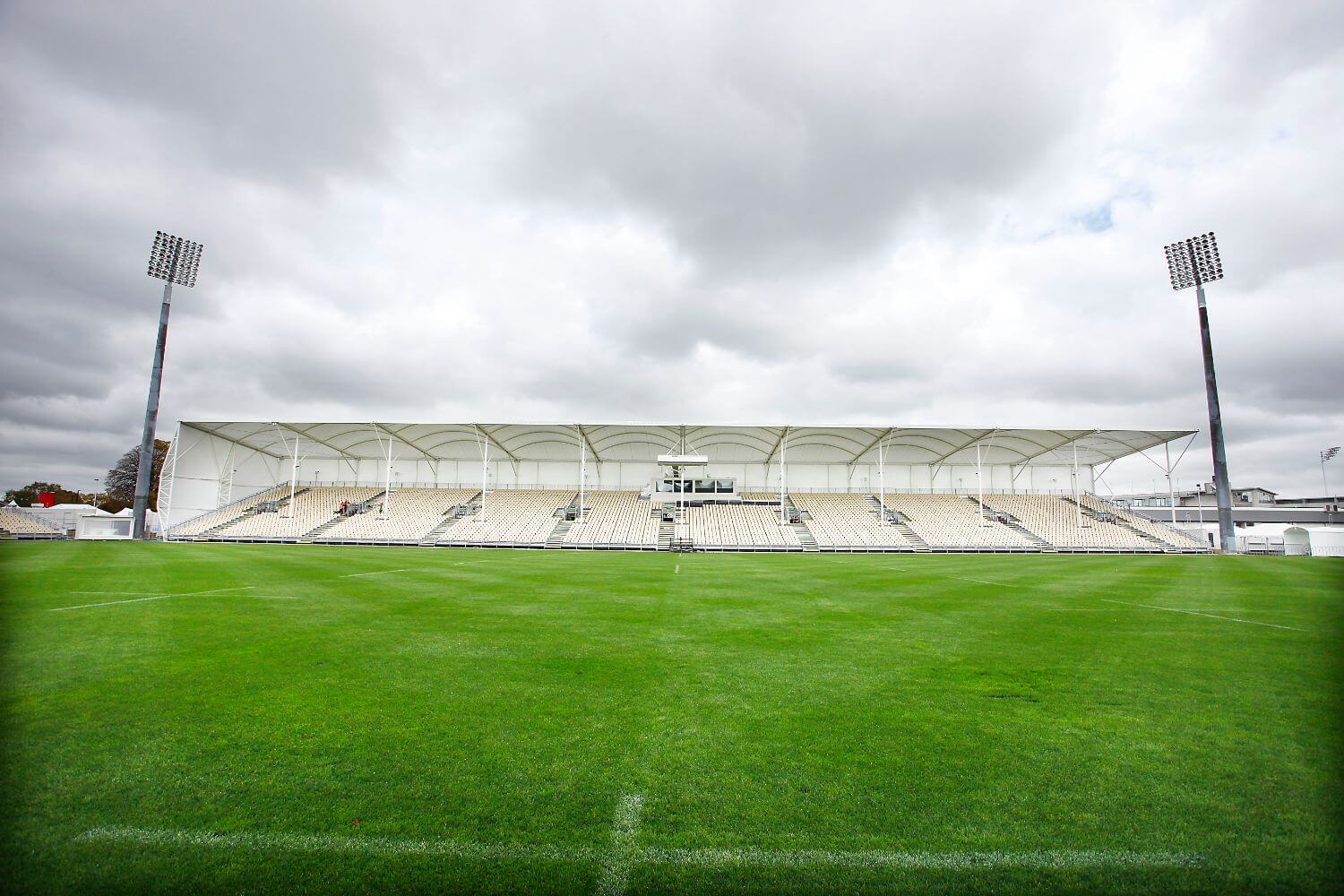
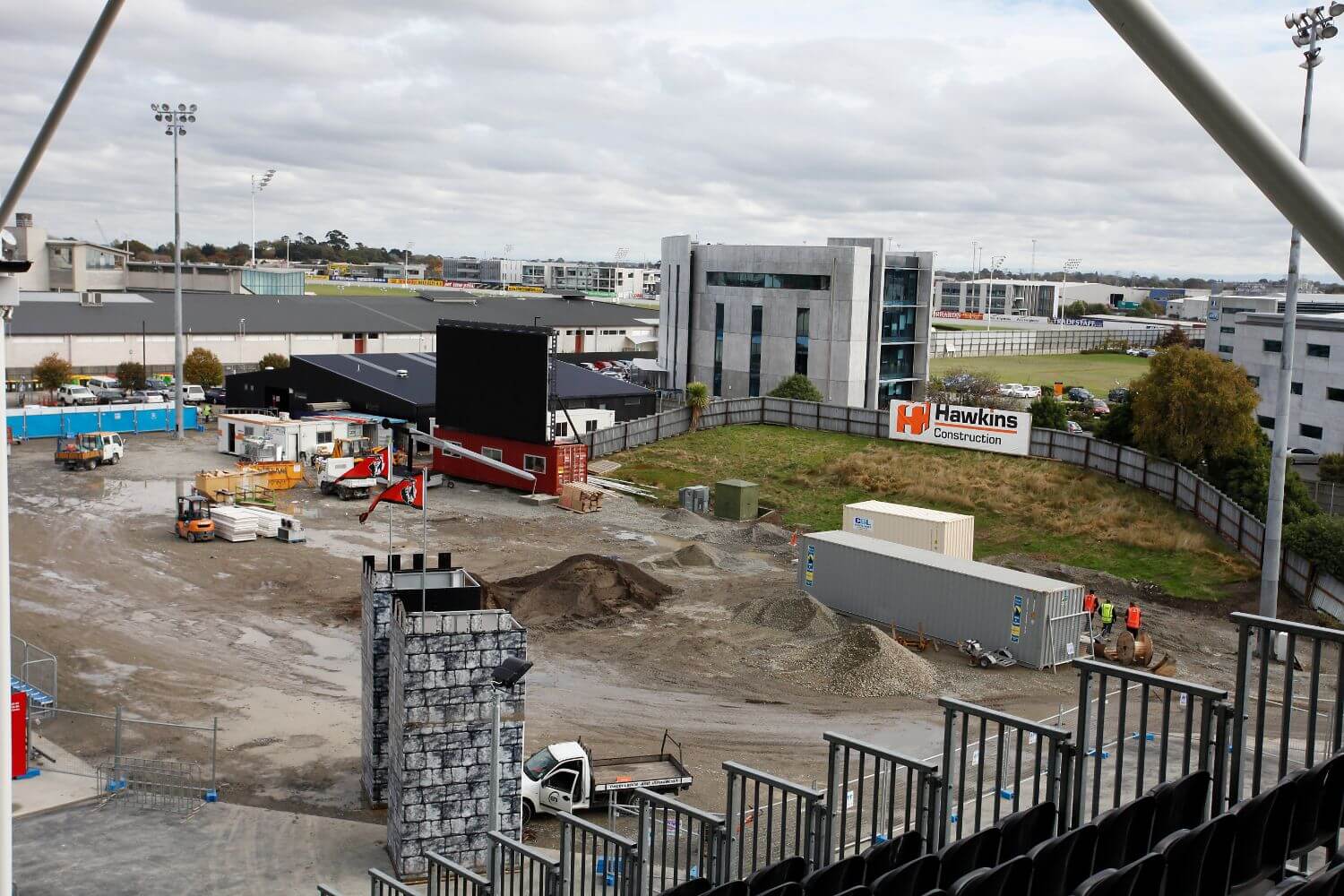
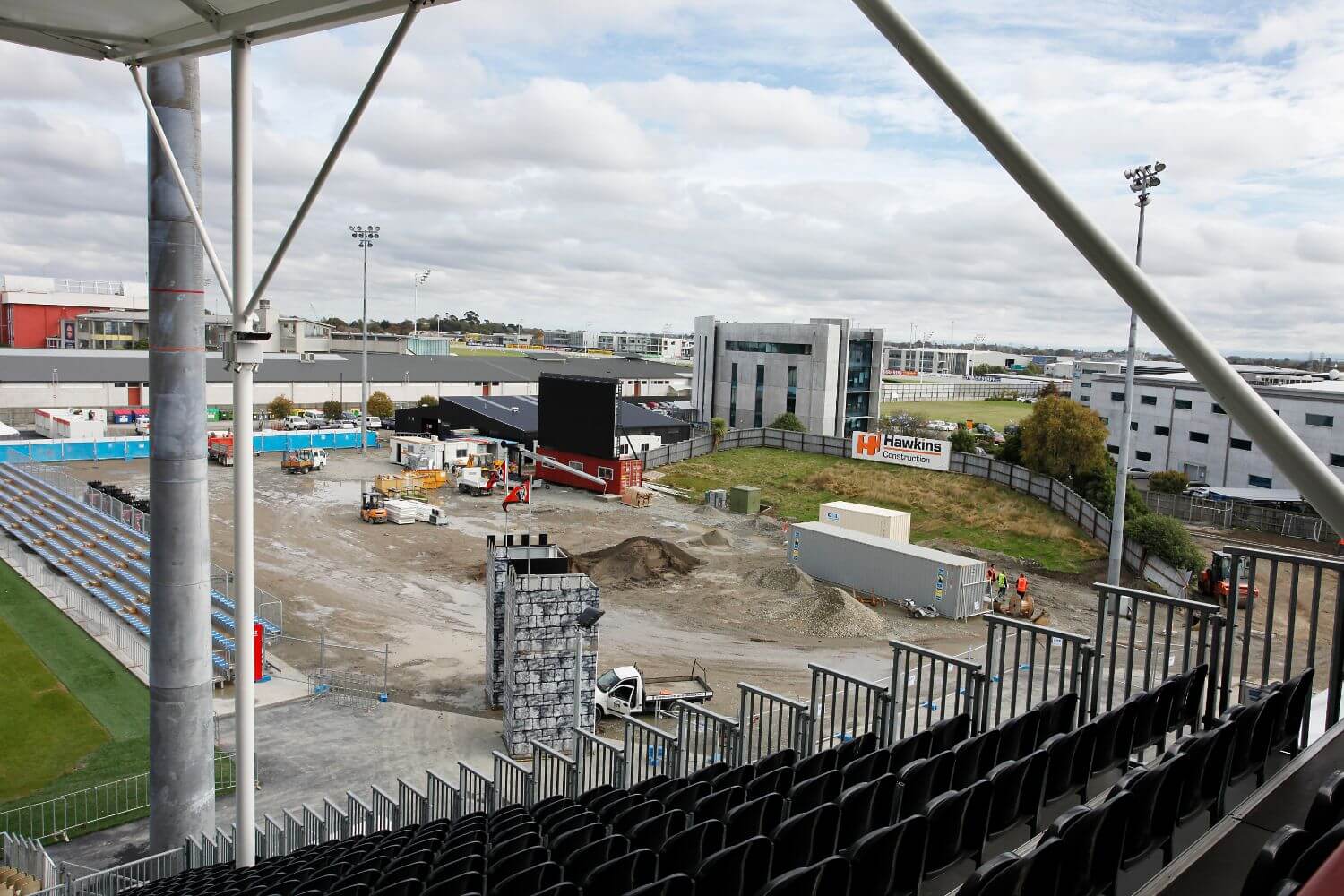
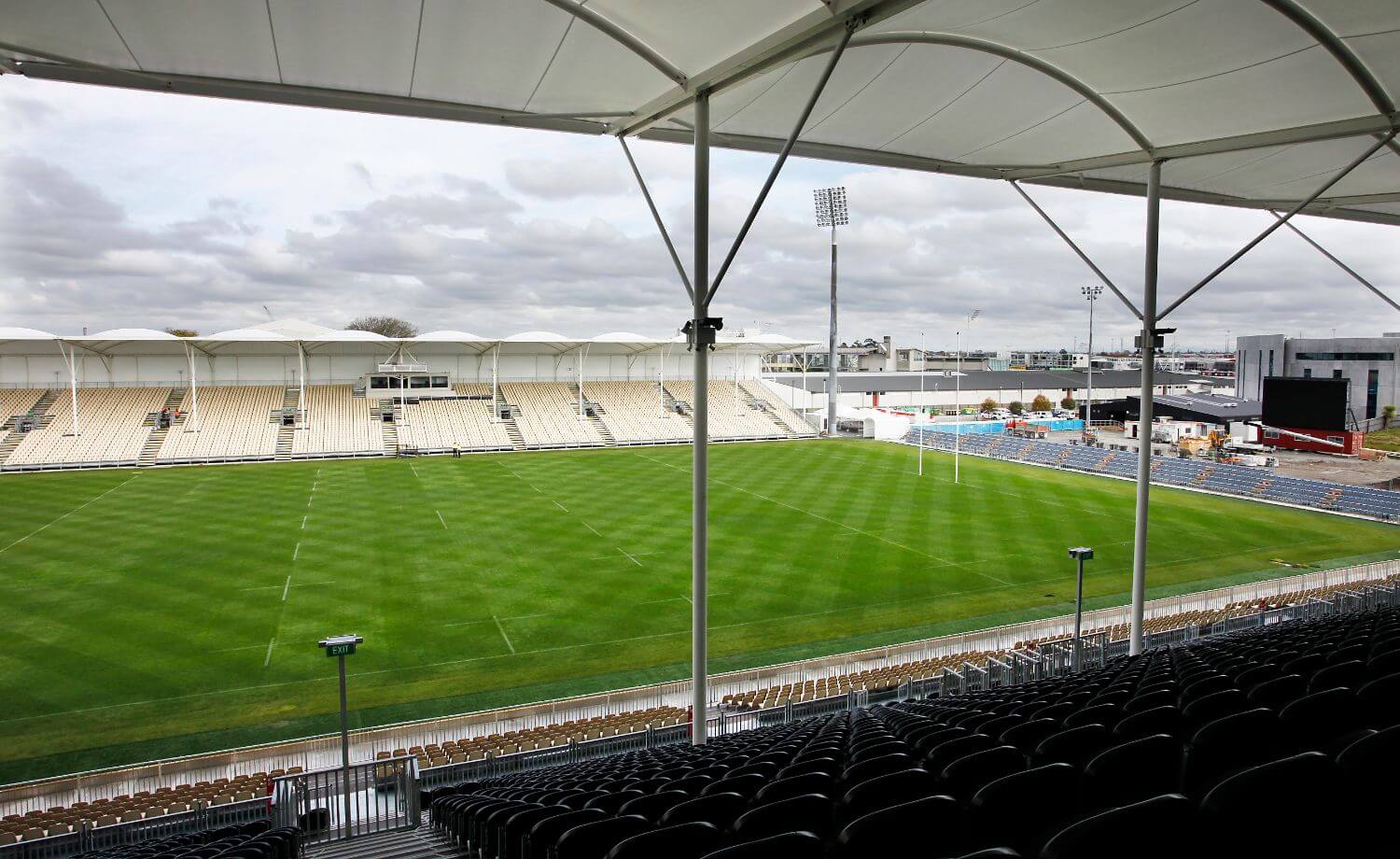
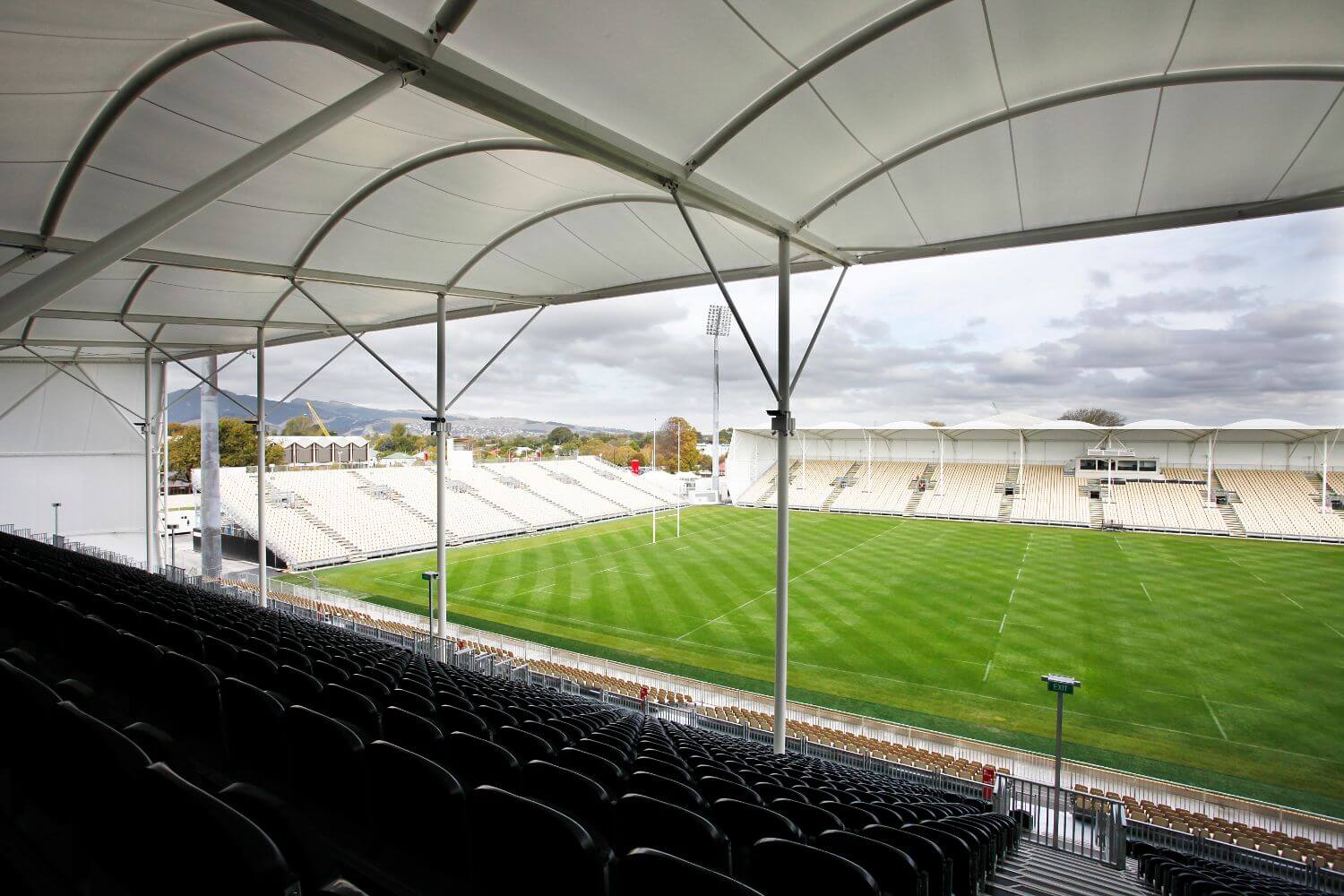

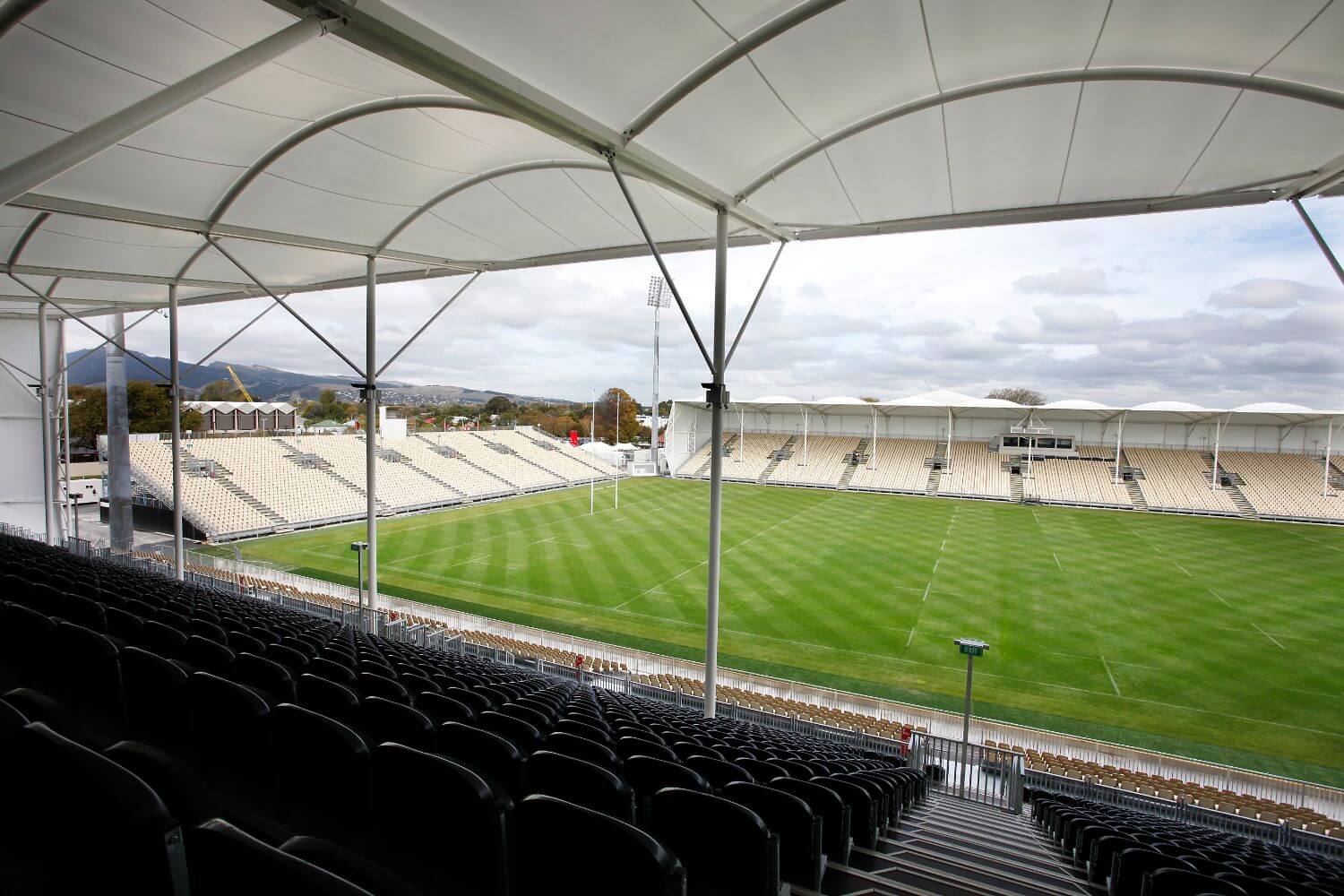
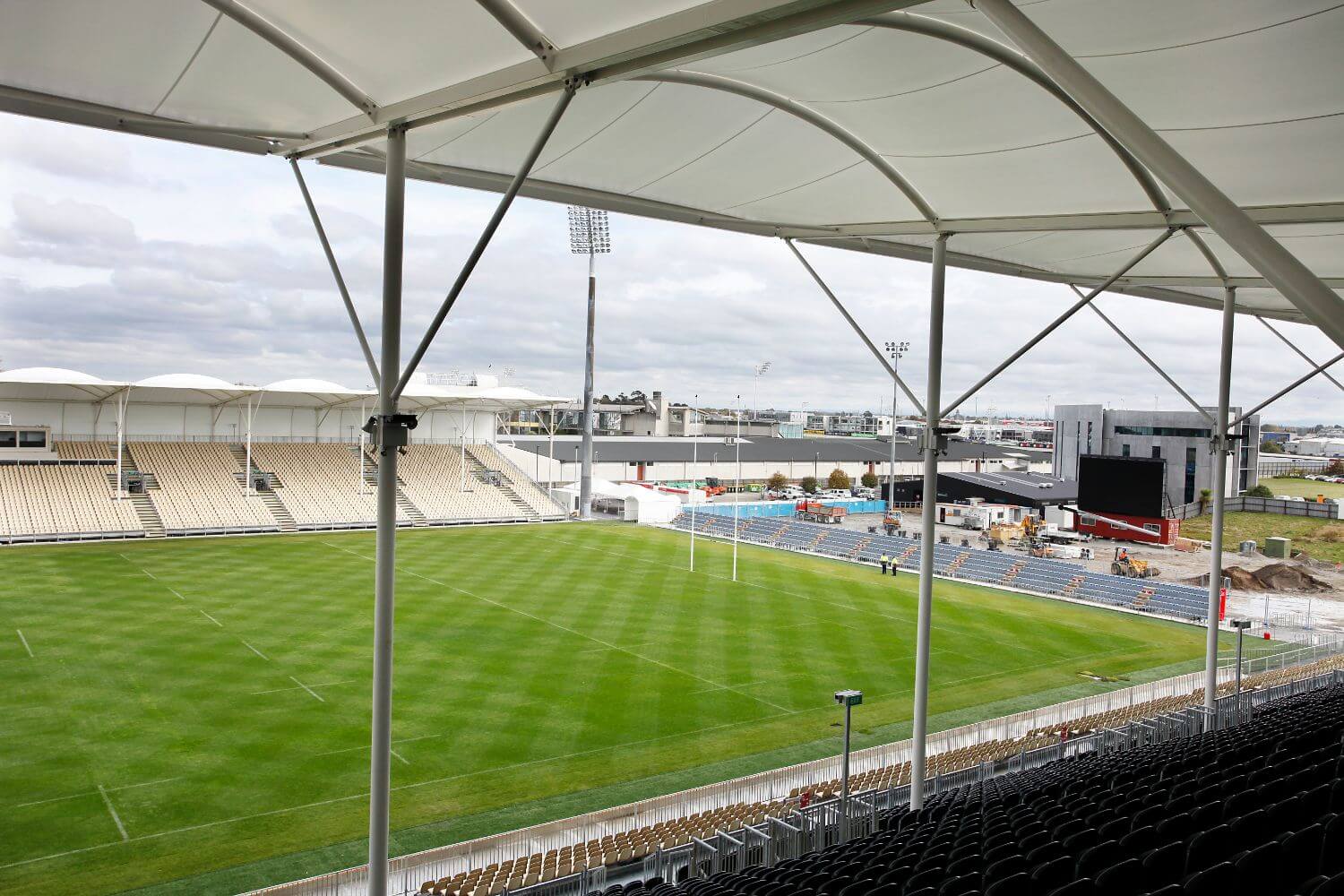


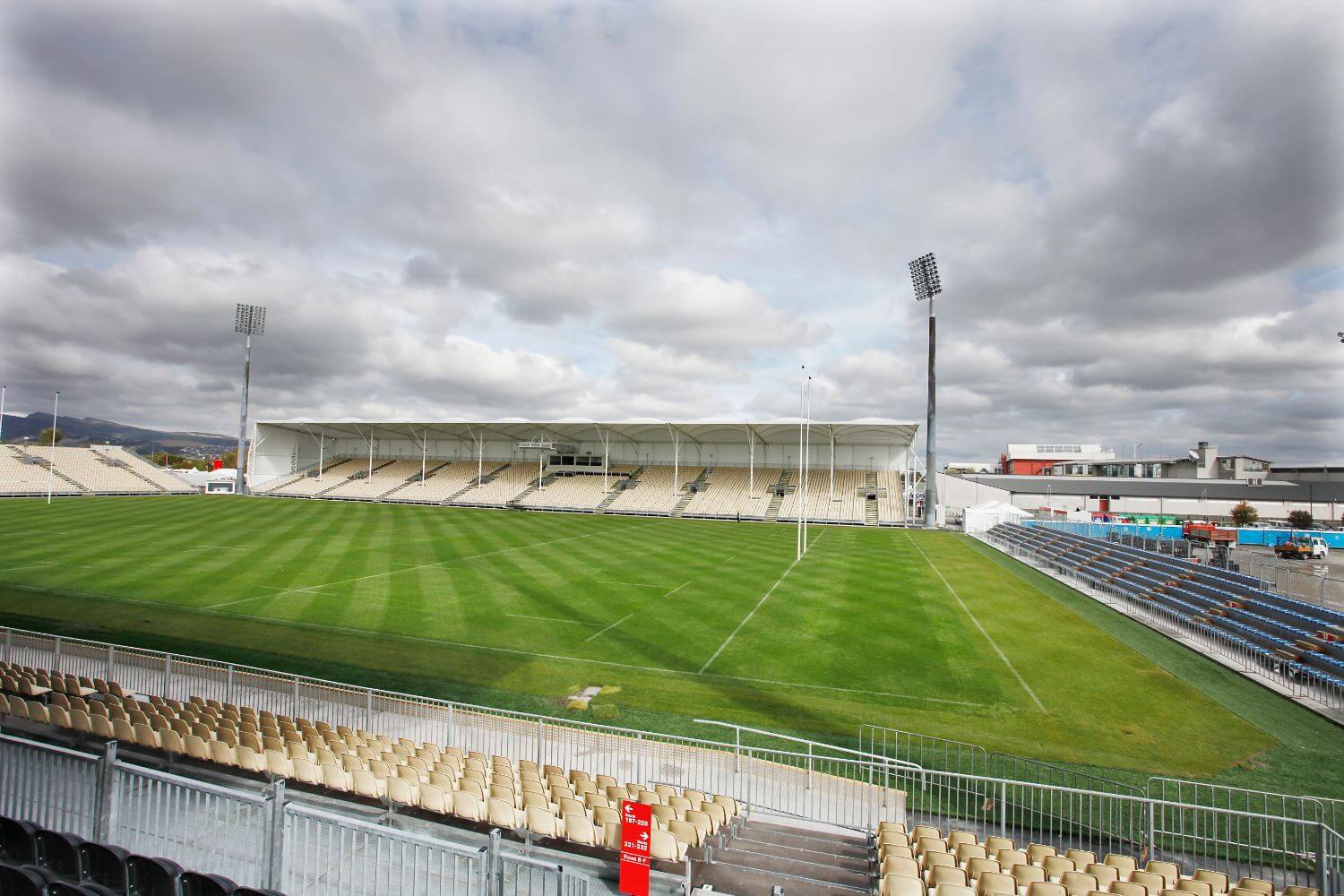
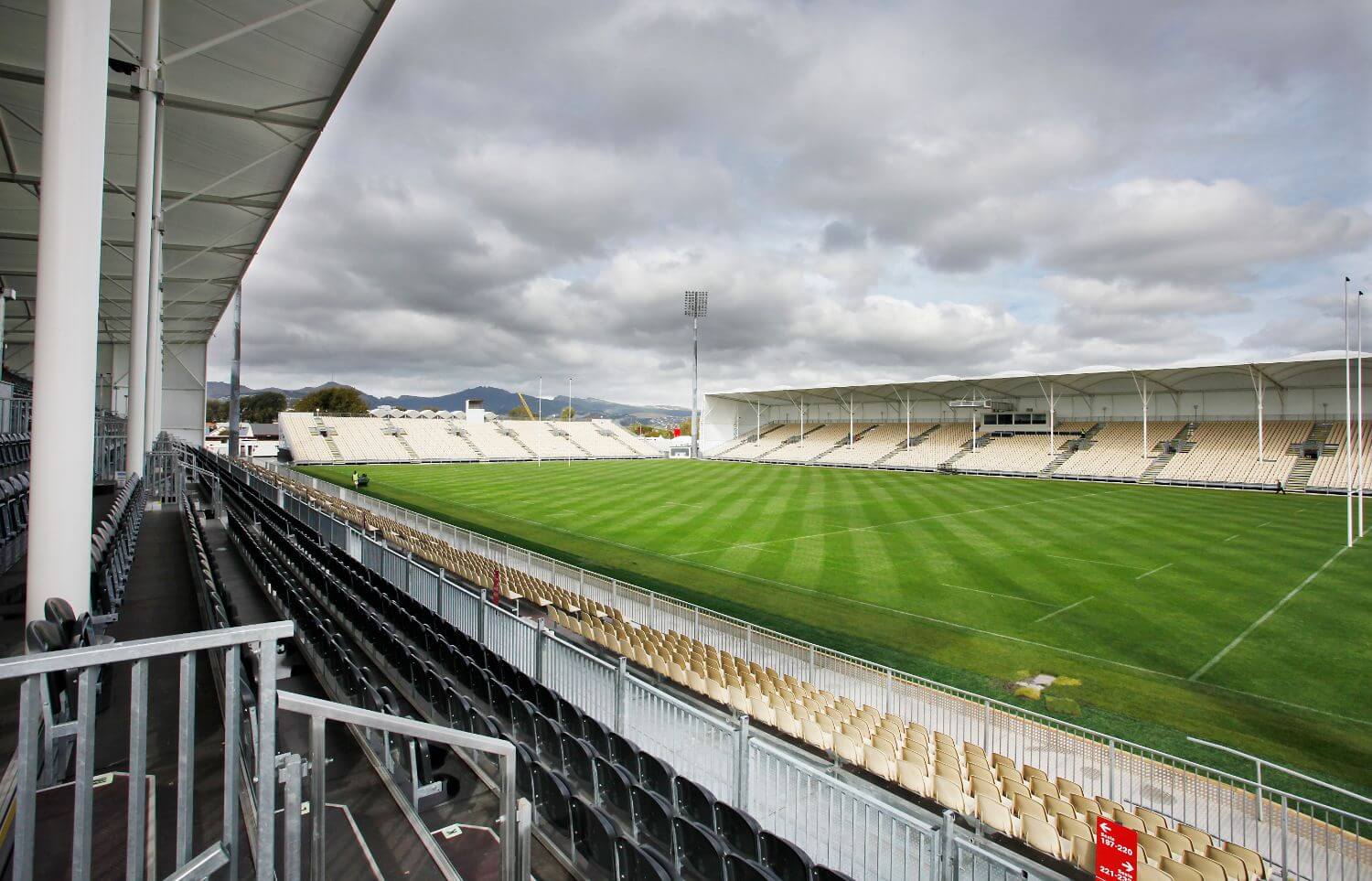
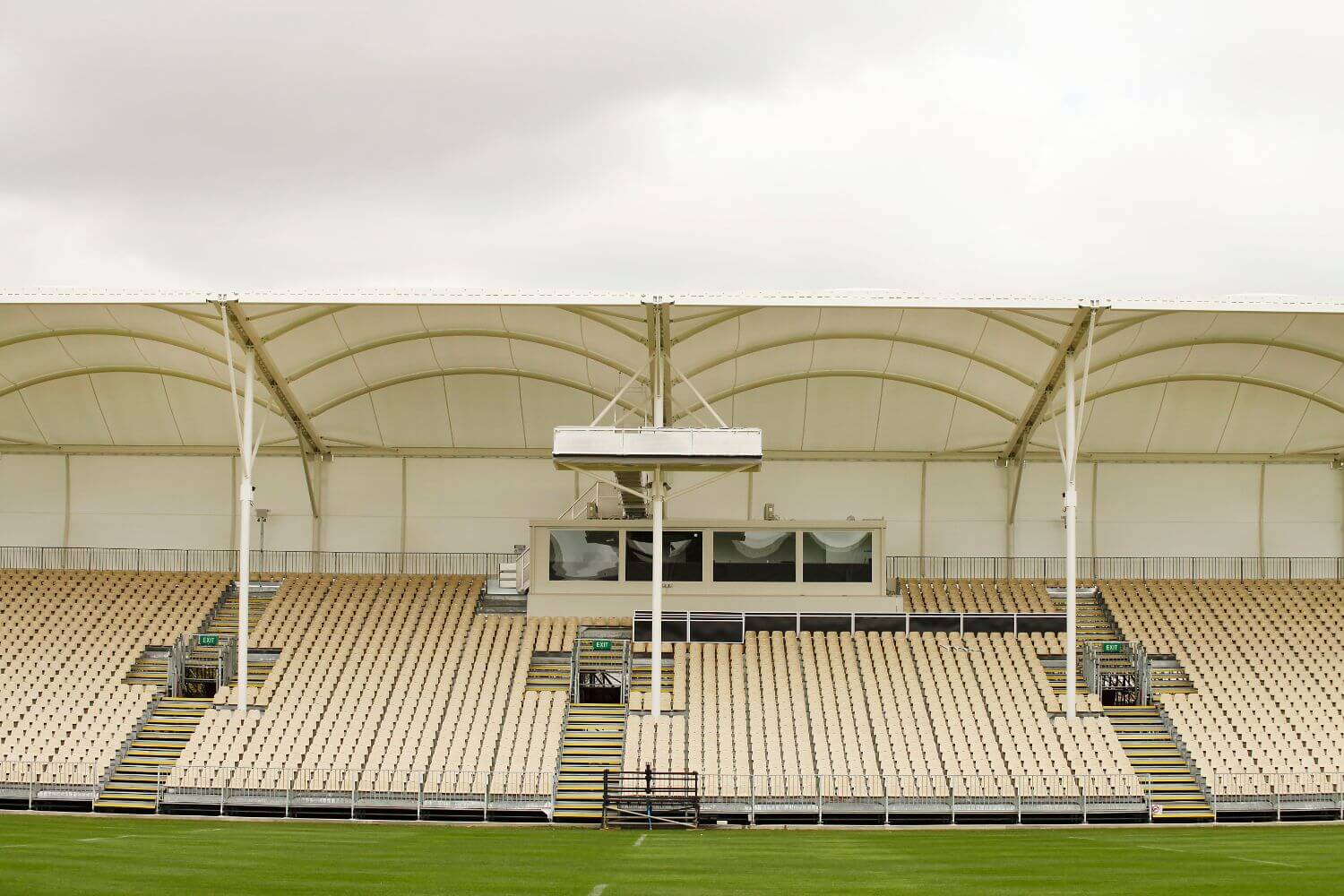

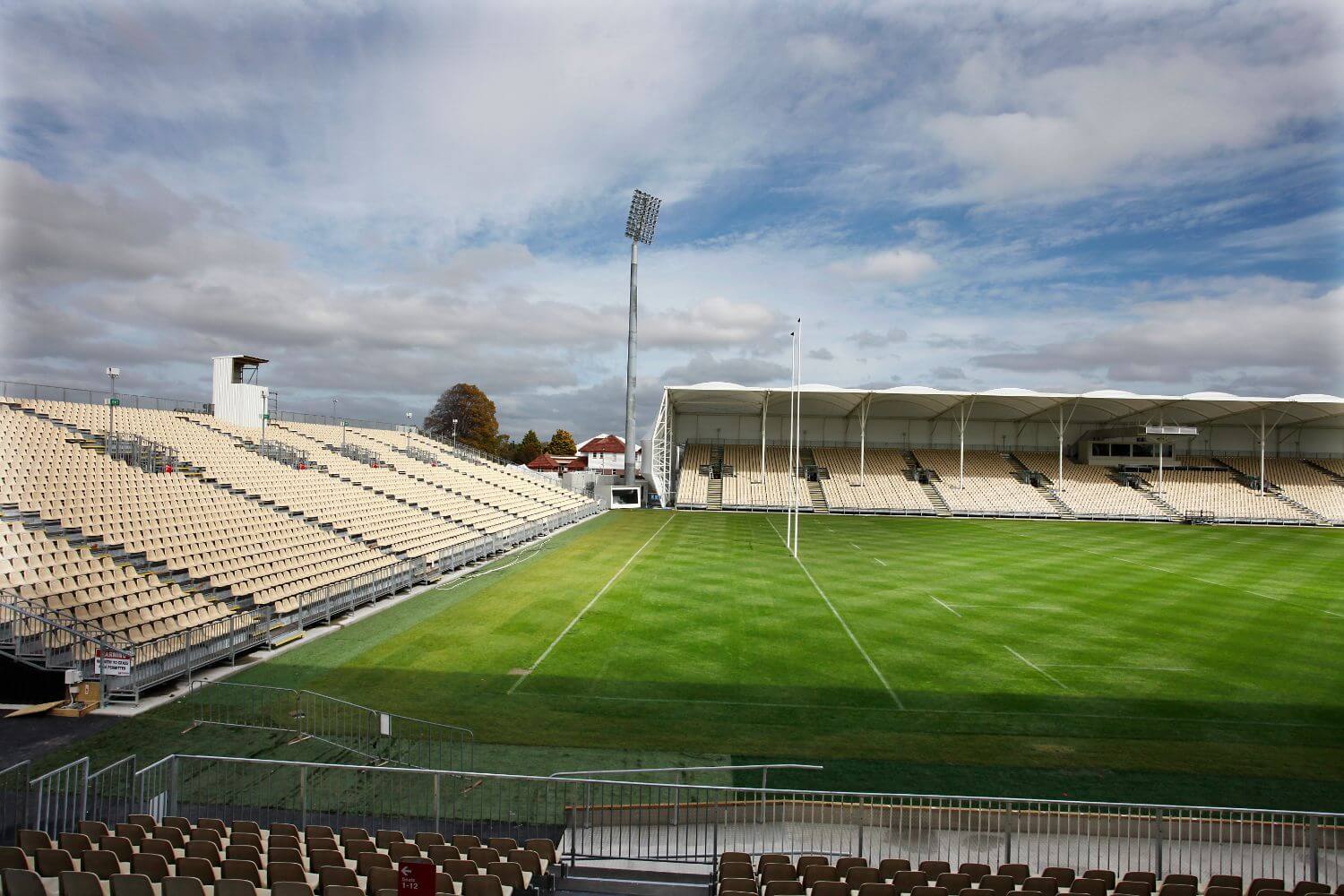


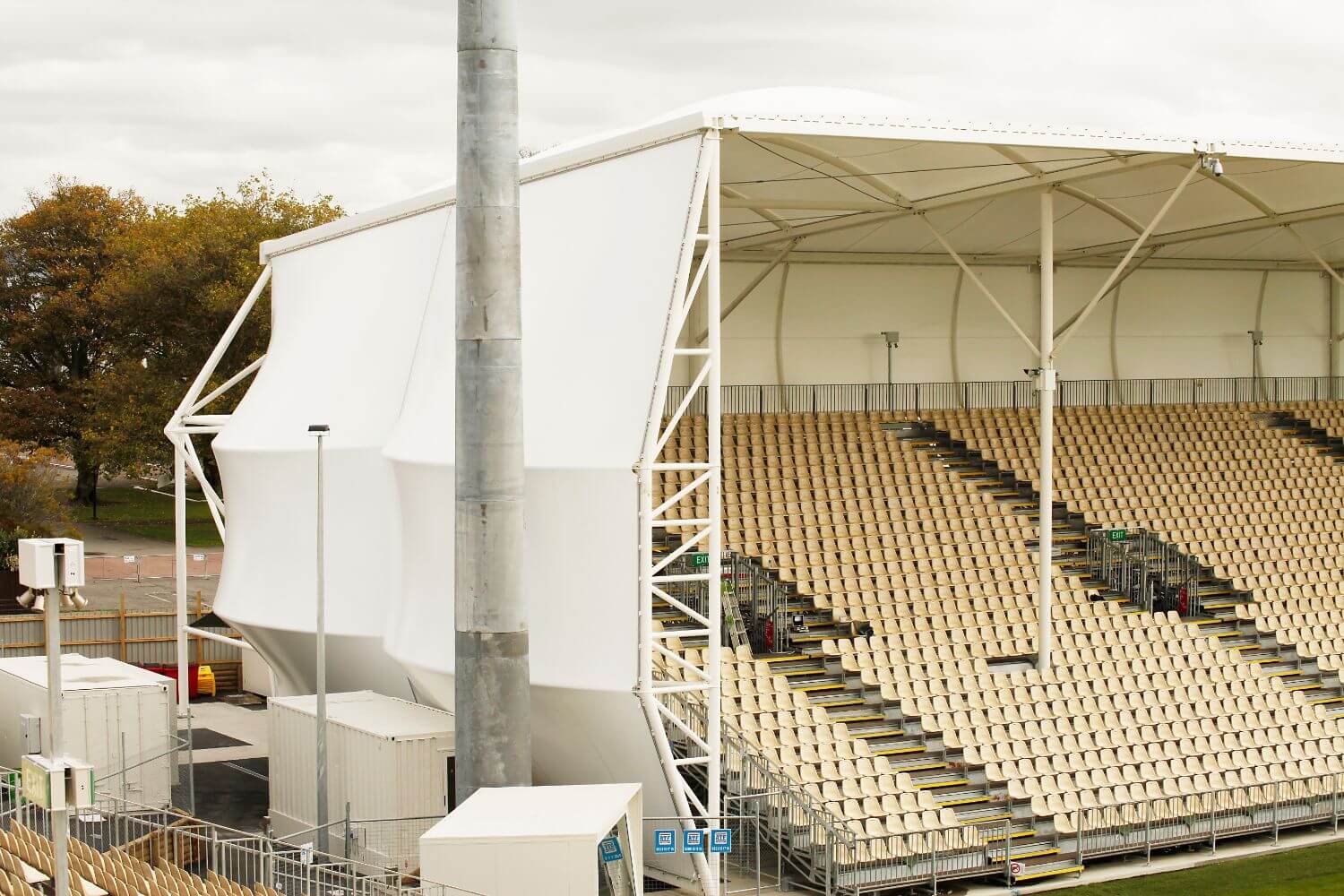
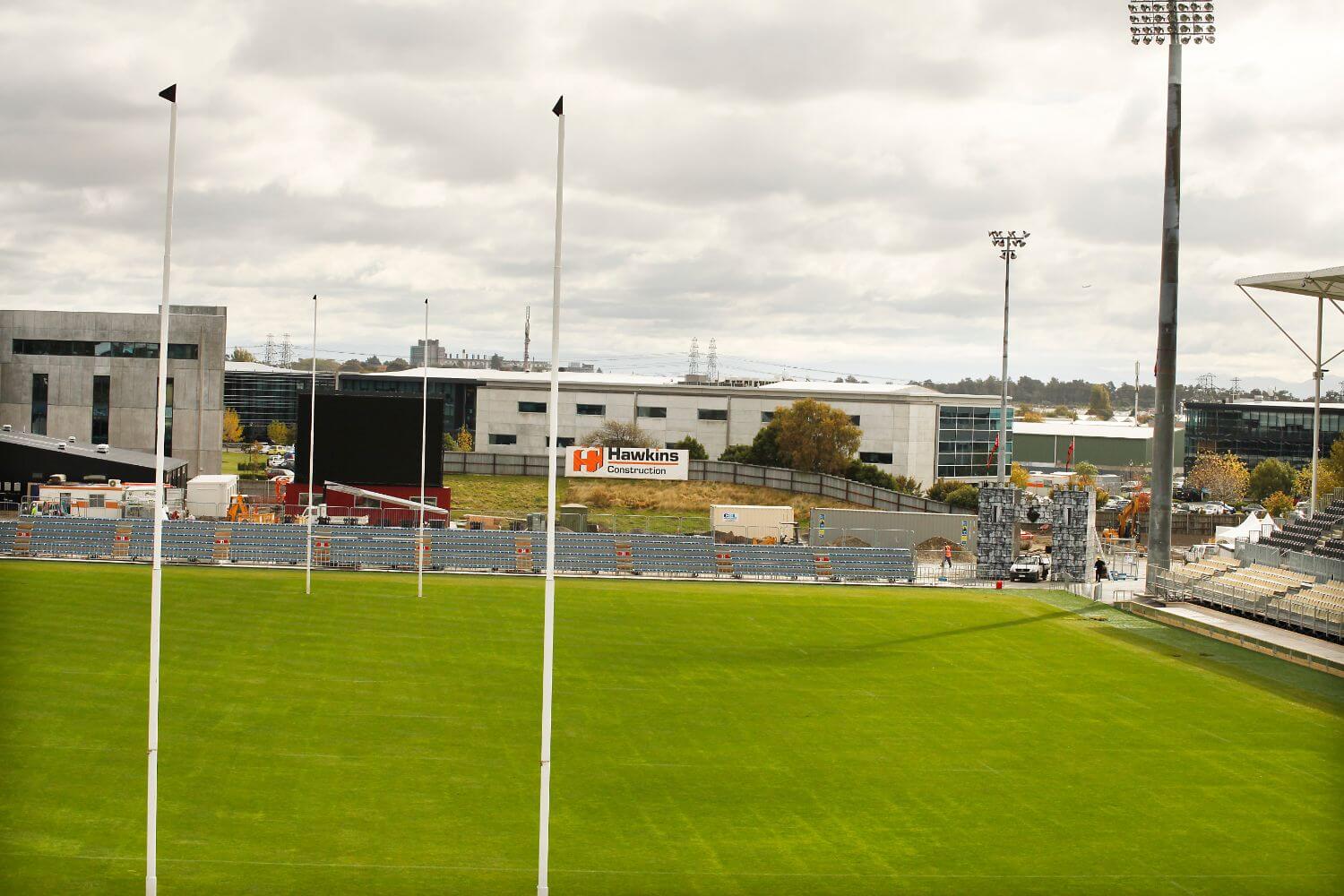
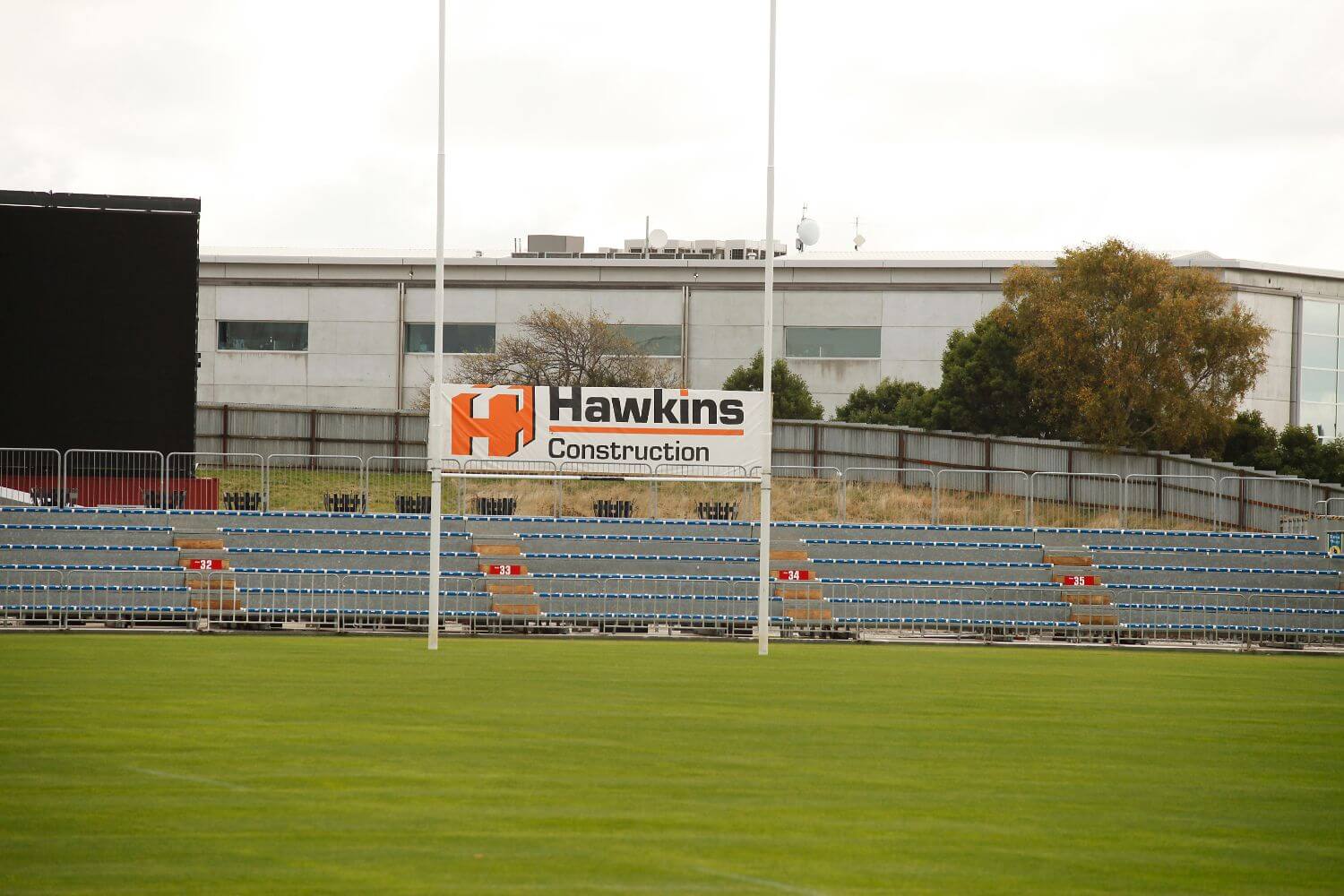
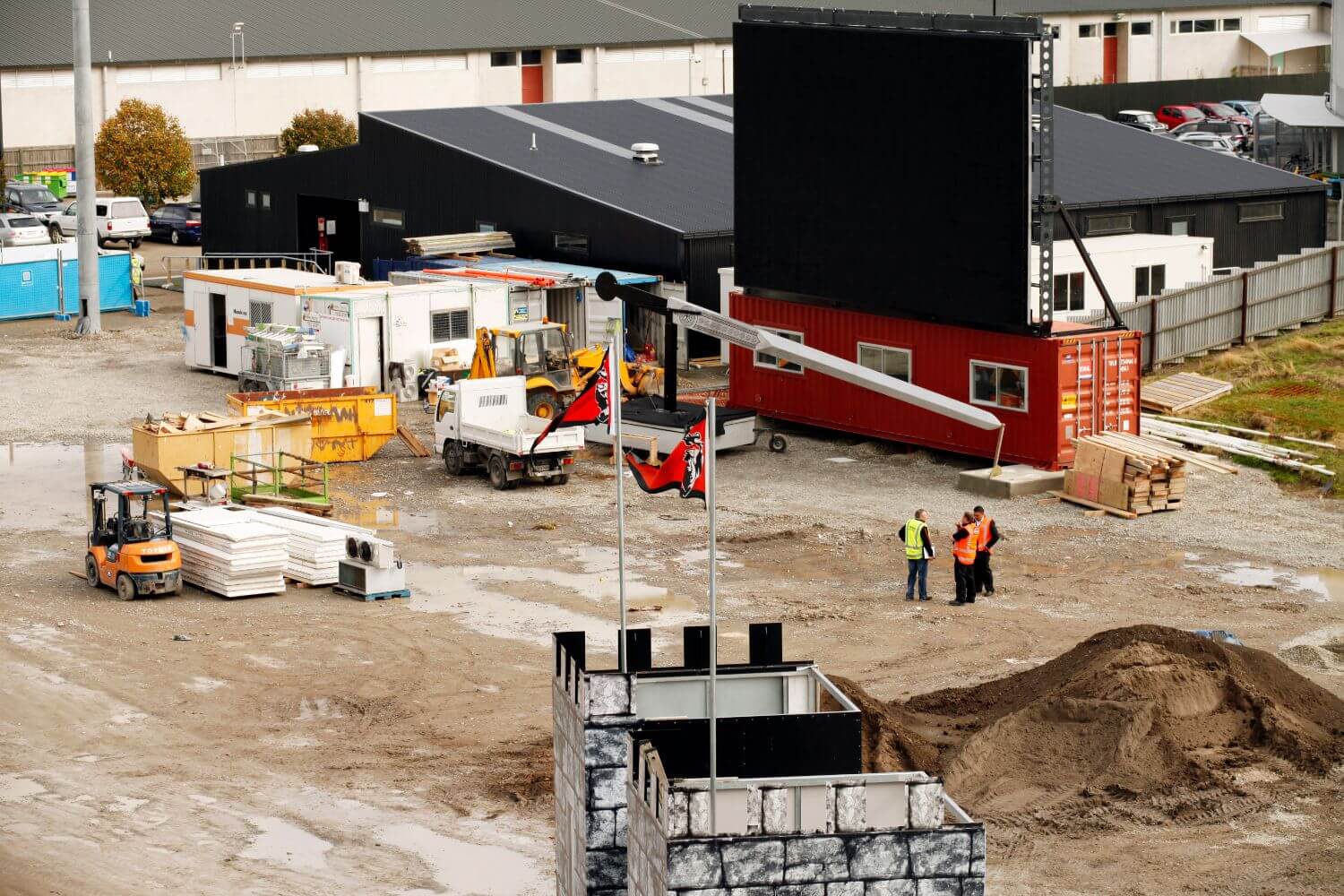
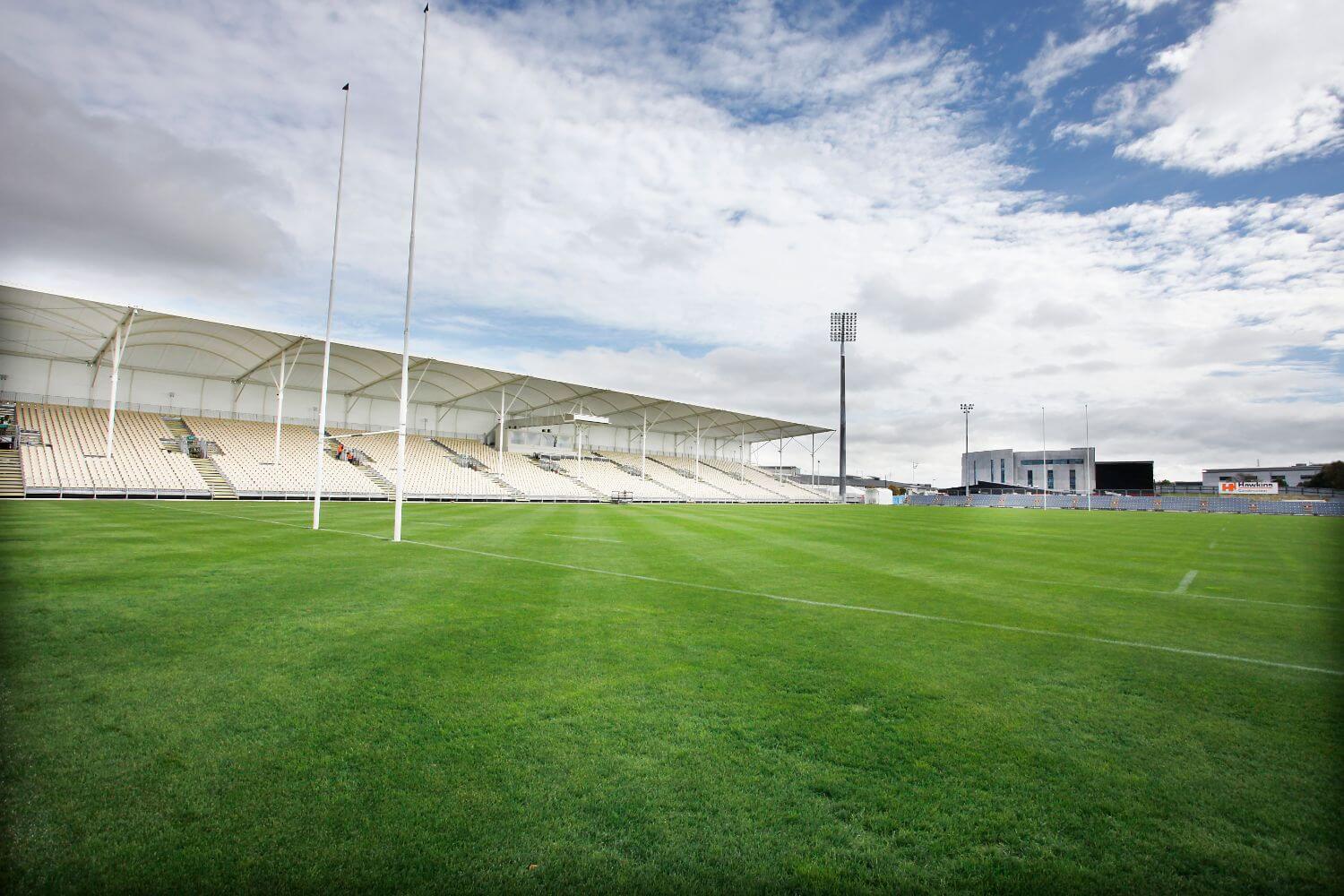
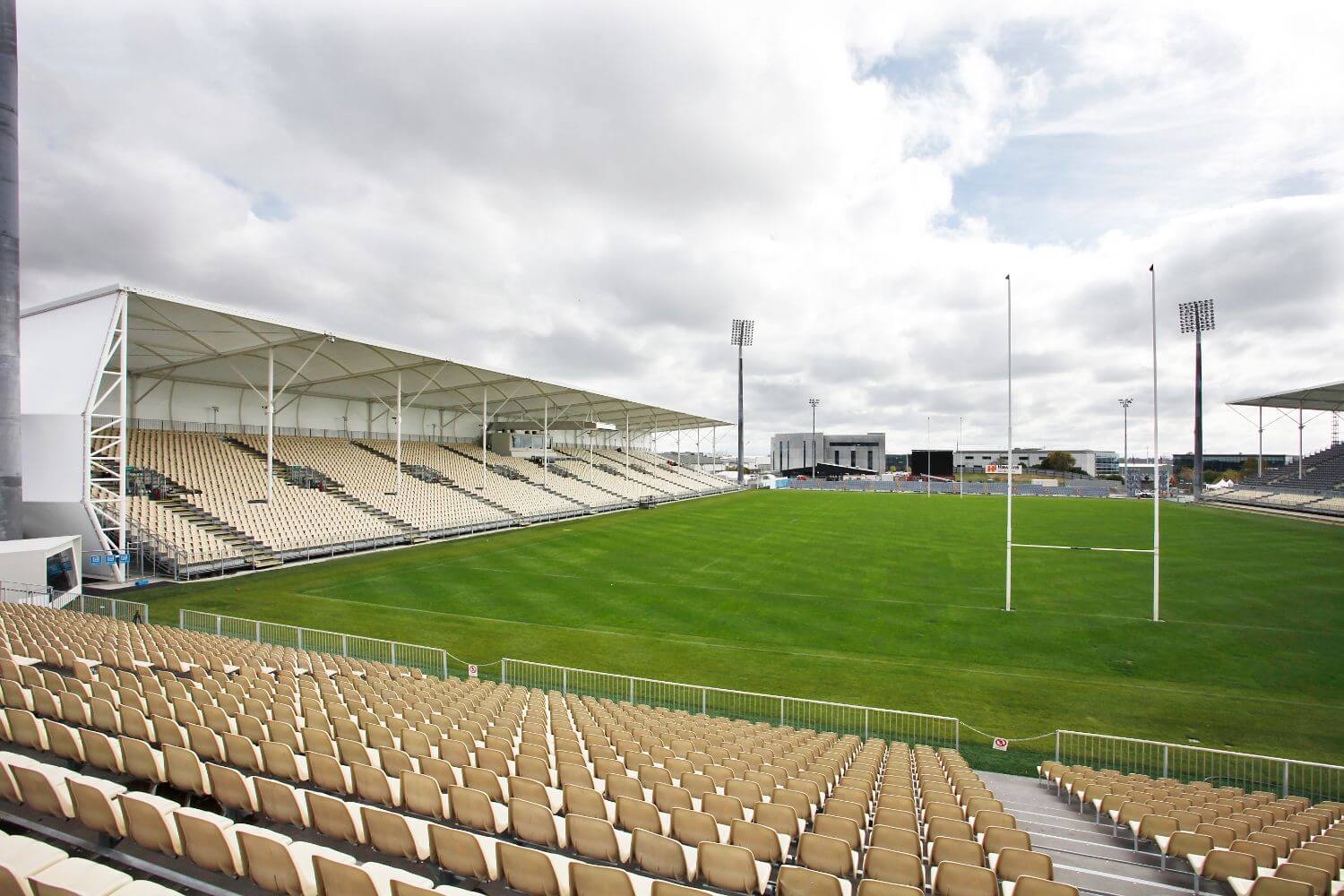
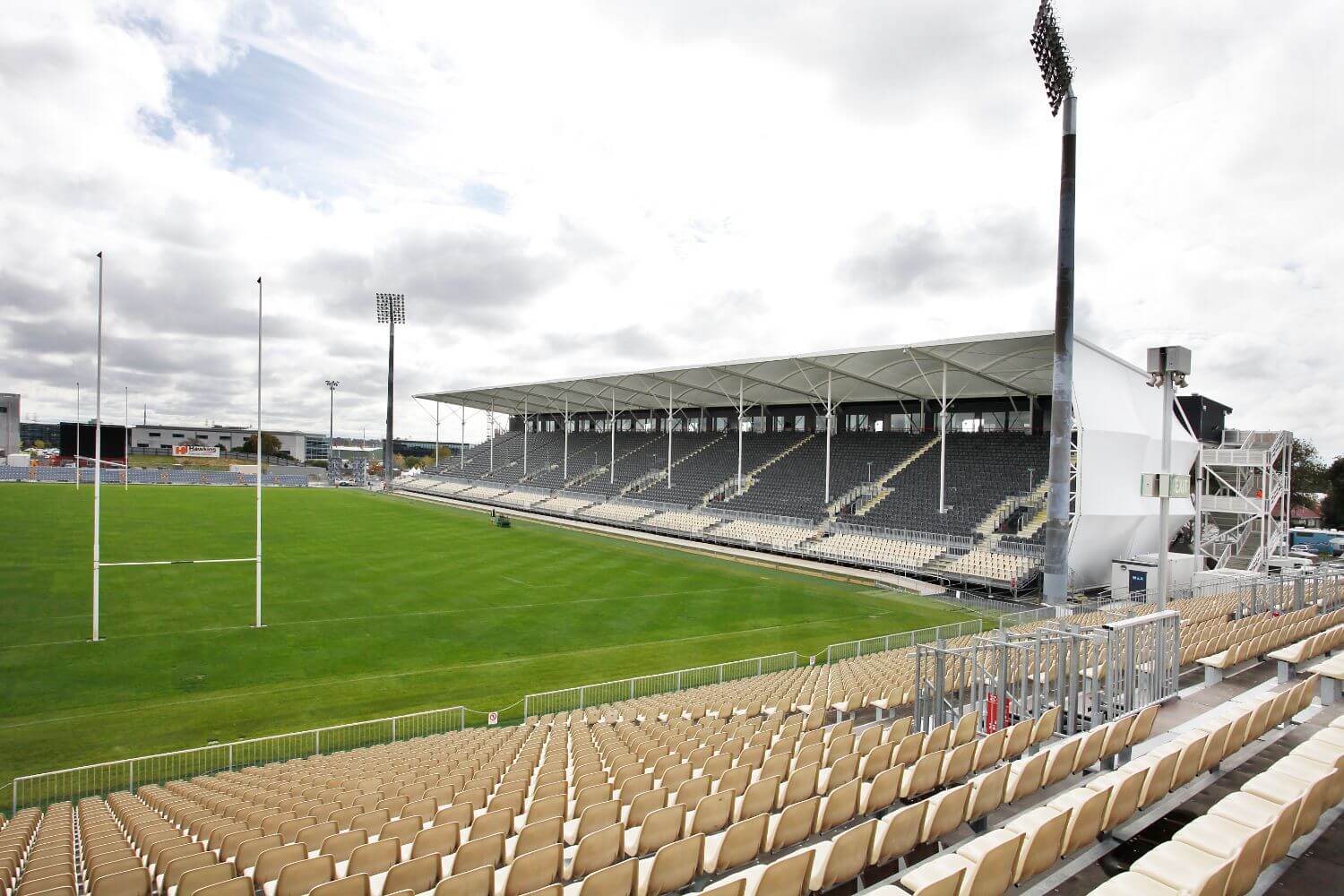

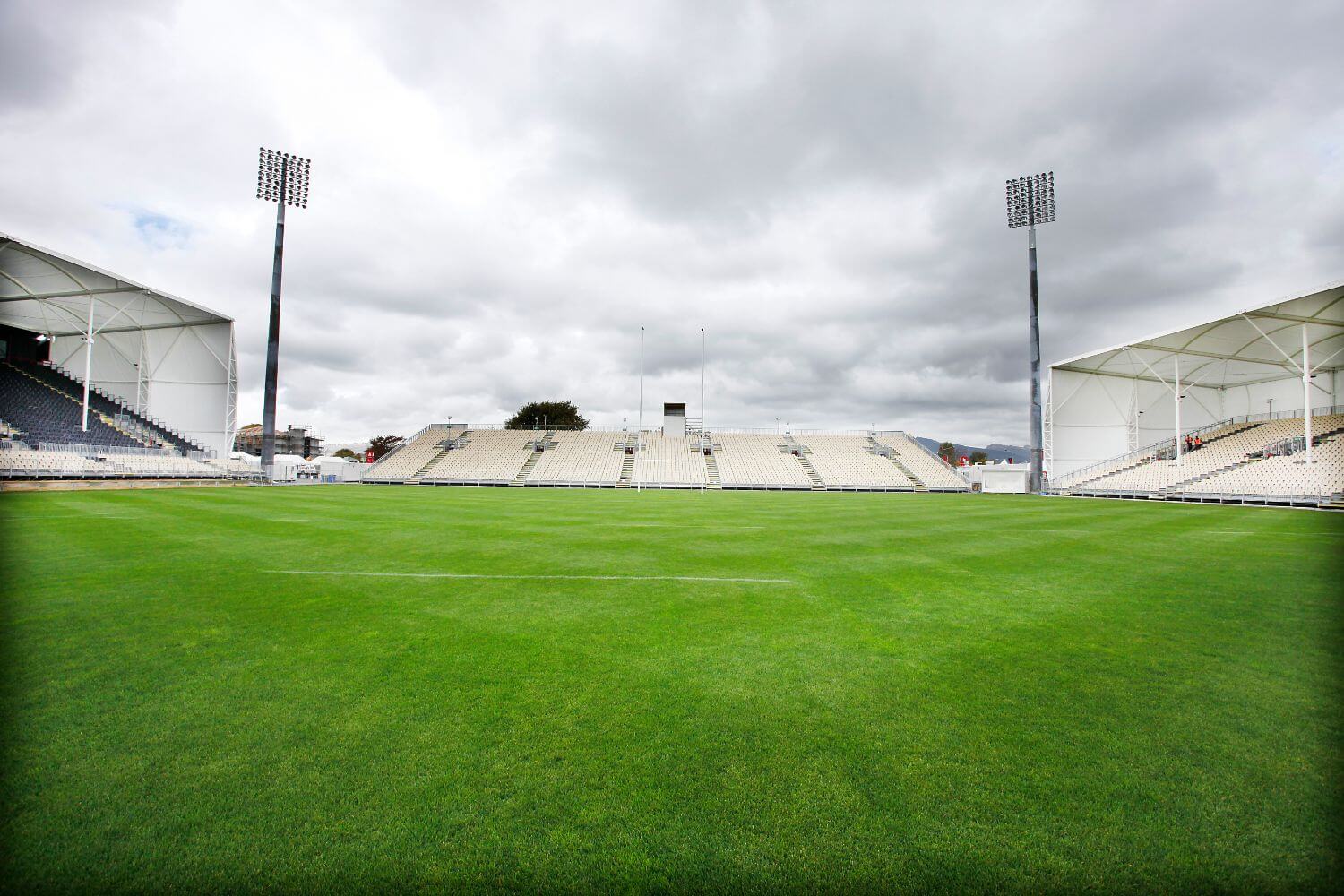
The project was more than the delivery of a temporary stadium – the facility stands as evidence that the Christchurch recovery was underway and that with the leadership of Hawkins, the construction workforce was ready to rebuild.
On Saturday 24 March 2012, when the Crusaders ran onto the field in their first home game following the Christchurch earthquakes significantly damaged the former AMI Stadium, the local Hawkins team and our committed sub-contractors and tradesmen all felt a huge sense of pride.
The pressure of tight time frames meant a less traditional approach to the project. For example, being able to procure all the necessary materials immediately was vital so Hawkins needed to be “in front of the queue” with suppliers and obtain a quick response to all requests.
There were also day and night rosters with the night workers focusing on tasks that needed to be completed before the next day’s tasks could be done – the erection of the structural steel framework, electrical work and concrete pours. Laying of the underground hydraulic services was a seven-day-a-week task for the crew of drain layers.
In one of the largest single concrete pours ever in Christchurch, 130 trucks delivered concrete for the platforms underneath the North and South Stands and players facilities overnight on 2 February 2012.
Recycling of materials was critical to the project with the lighting towers from Carisbrook in Dunedin, the turf recycled from AMI Stadium and some food and beverage portacoms and seating used during the Rugby World Cup at Eden Park, Auckland.
The new facility is flexible enough to be used not just for rugby, but all sporting events, as well as a concert venue with potential to increase its capacity to 25,000 for a major event.
Construction Facts:
- Approximately 340 tonnes of steel used in the stands and gantry roof structures
- Approx 77,000m of cabling used
- 7,400m of PVC fabric used
- Approx 4,500m3 of concrete used
- At the height of construction 400 workers were on site
- 180,000 man hours worked during construction phase





